BTS Resources
Empowering decision makers: Hands-on strategy training for tomorrow’s leaders
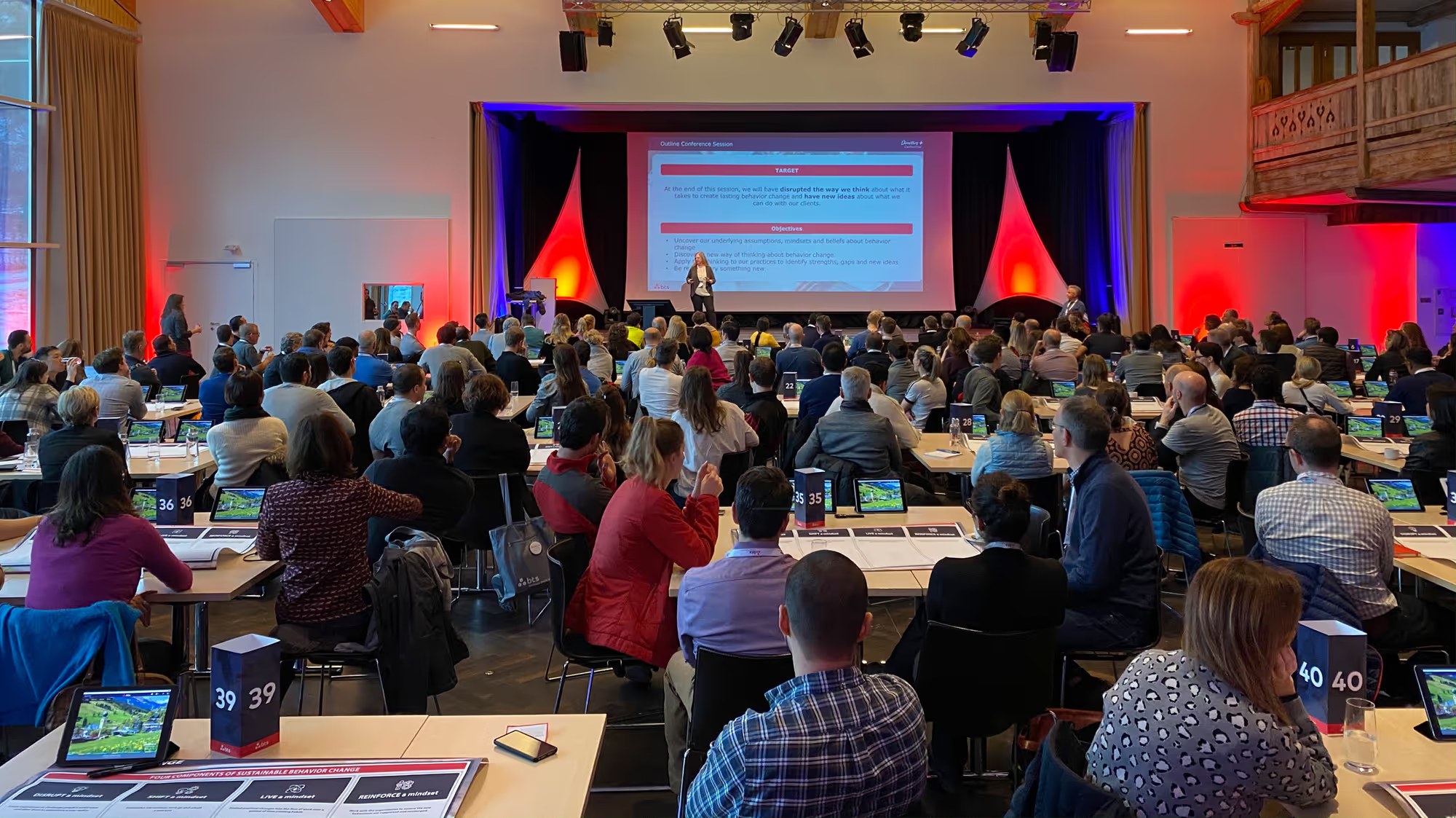

How AI is accelerating leadership development by enabling more practice
In today’s fast-paced business world, developing leaders who can navigate complexity, inspire teams, and deliver results is more critical than ever. Yet, traditional training methods often fall short in addressing the scale, personalization, and immediacy required to create lasting change. AI-powered practice bots are emerging as a transformative solution, offering leaders unparalleled opportunities to practice, grow, and improve—faster and more effectively than ever before.
Feedback with precision and accessibility
Feedback is the cornerstone of leadership development. However, research from Gallup reveals that only 26% of employees strongly agree that the feedback they receive improves their performance. Feedback all too often misses the mark, because it is too vague, infrequent and not relevant to the job at hand. AI practice bots address this gap by providing instant, objective, and actionable feedback through simulated conversations. Well trained practice bots, armed with leading-edge, business-specific knowledge on the critical skills needed for leaders, offer the most valuable simulated conversations, and the most accurate feedback.These bots mimic real-world scenarios such as performance reviews, stakeholder negotiations, and high-stakes presentations. Leaders gain immediate insights into their communication style, areas for improvement, and actionable next steps—all without the need for scheduled coaching sessions.Moreover, AI expands access to high-quality feedback across all levels of leadership. No longer confined by time, geography, or resource constraints, organizations can now equip every leader with the tools they need to grow. This scalability ensures consistent, equitable development opportunities while fostering a culture of continuous improvement.
.avif)
Limitless practice for deeper growth
Behavioral change is built through deliberate practice, yet many traditional training programs provide limited opportunities for leaders to apply what they’ve learned. A study from the American Psychological Association (APA) highlights that repetitive, focused practice is essential for mastering new skills.AI bots remove barriers to practice by offering leaders unlimited chances to rehearse critical conversations, test new approaches, and refine their strategies. Whether delivering constructive feedback, managing conflict, or influencing stakeholders, leaders can practice important conversations without fear of judgment or failure.Available 24/7, these bots integrate development into daily routines, accelerating skill acquisition and embedding new behaviors. The result is not only faster growth but also greater confidence and readiness to tackle complex challenges.
Amplifying human insight through AI
AI bots enhance leadership development not by replacing human expertise but by amplifying it. They excel at handling repetitive, data-driven tasks such as providing feedback and tracking performance trends. However, the role of human insight—through coaching, mentorship, and relationship building—remains irreplaceable.According to Deloitte, organizations that combine AI-powered tools with human-led learning experiences see a 33% increase in effectiveness. AI provides the structure and scalability to ensure consistent development, while human experts bring empathy, context, and nuance to guide leaders on their unique journeys.This synergy between technology and human insight accelerates individual growth while creating a ripple effect across organizations. Leaders not only develop the skills they need to excel but also inspire their teams and drive meaningful cultural change.
Transforming leadership development with AI practice bots
AI practice bots enhance leadership development by:
- Delivering precise, personalized feedback: Instant insights empower leaders to grow faster and with greater clarity.
- Offering unlimited opportunities to practice: Leaders can refine critical skills anytime, embedding growth into their daily routines.
- Providing data-driven insights: Bots analyze performance trends across leaders within an organization to inform targeted training strategies.
- Scaling impactful learning: Accessible to leaders across geographies and roles, AI ensures consistent and equitable development opportunities.
By enabling leaders to practice more, grow faster, and lead with confidence, AI-powered bots are transforming leadership development—one conversation at a time.Discover how AI practice bots can enhance your leadership strategy and deliver lasting results.

Navigating Leadership Challenges
P R E S S R E L E A S E
Stockholm, March 3, 2025
STOCKHOLM, SWEDEN – BTS Group AB (publ), a leading global consultancy specializing in strategy execution, change, and people development, has agreed to acquire Sounding Board, a technology-based leader in scalable, high-impact coaching solutions driving transformational leadership development.
“With this acquisition, BTS can leapfrog its current technology and operations with the integration of a team and platform that is considerably more productive and ready-to-scale globally than our current technology. The acquisition allows us to create and take to market a very differentiated offering and to faster expand BTS’ current USD 40 million coaching services, taking advantage of the growing USD 7 billion coaching market, and to increase our margins,” says Jessica Skon, CEO of BTS Group.
Founded by Christine Tao and Lori Mazan in 2016, Sounding Board is a silicon-valley based start-up with USD 7 million in scaled coaching revenue in 2024, delivered through the company’s proprietary technology platform. With over USD 45 million in capital invested in its technology, Sounding Board has pioneered a modern, proprietary platform to fully meet a company’s scaled coaching needs. The addition of Sounding Board’s coach network will create a combined BTS network of 700 credentialled coaches with global reach.
The acquisition is expected to have a slightly positive impact on EBITA in 2025 and a positive impact on both earnings and margins in 2026.
Sounding Board is differentiated in the market with a unified software platform for coaching that can be utilized for both external and internal coaching and mentoring programs. With a track record of high client retention, a global network of expert coaches, and a data-driven approach to leadership transformation, Sounding Board has been taking market share with its scalable coaching solution offerings. With future support from BTS global account managers and access to BTS’ global client base, the acquisition will be a pivotal moment for both firms to continue their mission together.
“Sounding Board’s innovative coaching platform, efficient and scalable operating model, combined with both firms’ global reach of world class, consistent top 5 percent coaches, is exactly what our clients have been asking for. They are tired of inconsistent coaching quality from competitors and platforms that don’t reinforce their organization’s unique strategy and culture,” concludes Katrin Mulford, BTS Partner and Global Head of Coaching.
"We are joining BTS to amplify and accelerate our impact,"
said Christine Tao, Co-founder and CEO of Sounding Board.
"BTS’s global reach, broader leader development solutions, industry-leading simulations, and AI-based coaching and practice for strategic plays and culture shifts, are exactly the additional tools clients are looking for to complement our coaching. Together, we will redefine how companies prepare their people, deliver ongoing change at scale, and develop leaders who drive transformation."
“Joining forces, we will simultaneously drive growth and win market share within coaching, fortifying our reputation in making strategy personal, while also driving automation and efficiencies for our clients and in our operations as we scale. By replacing our platform with theirs, the handling of all the steps in the coaching process will become significantly more effective, from scheduling to coaching to insights and billing. It will be easier, faster, and less resource intensive to manage large programs with tens of thousands of leaders. In addition, Sounding Board’s operating model will serve as an example inside BTS as a more tech-forward way of working,”
adds Jessica Skon.
The acquisition includes a limited initial cash consideration as well as additional purchase price considerations paid between 2025 and 2028, provided the acquired business meets specific targets during that period. The transaction is expected to close as soon as the completion procedures have been finalized, which are expected in March.
BTS's strategy for acquisitions aims to create a broader base for future organic growth while actively consolidating in a highly fragmented market. Through its acquisitions, BTS seeks to serve new and existing customers with innovative services.
For more information, please contact:
BTS Group AB
Jessica Skon, CEO
+1 (415) 203 1760
Michael Wallin, Head of investor relations
michael.wallin@bts.com
+46-8-58 70 70 02
+46-708-78 80 19
.avif)
Cultivate Braver Conversations for Trust & Innovation
In today’s rapidly changing world, leaders must foster environments where open dialogue, trust, and innovation thrive. But are "safe spaces" enough? In this article published in the Winter 2025 issue of Rotman Management, Andrew Atkins explores how leaders can move beyond comfort to create braver spaces—ones that encourage authenticity, diverse perspectives, and meaningful change.Discover the seven dimensions that define conversational spaces, the pitfalls of toxic and overly safe environments, and ten actionable strategies to cultivate braver conversations in your organization.
- Learn how braver conversations drive innovation and collaboration.
- Understand why "safe spaces" can limit growth and honest dialogue.
- Get practical tips to create a culture of trust, engagement, and psychological safety.
Ready to transform your team’s conversations? Download the full article now. (This article appears in Rotman Management Winter 2025.)

5 make-or-break moments in Mergers and Acquisitions
5 make-or-break moments that shape the success (or failure) of Mergers and Acquisitions
Analysts say 2025 will be the year that the multi-trillion-dollar Mergers and Acquisition floodgates will open once again.
For us at BTS, these key moments are an exciting opportunity to witness how strategy, culture and leadership play together. Mergers and acquisitions (M&A) represent some of the highest-stakes decisions an organization can make. Analysts scrutinize billion-dollar deals, executives promise ambitious synergy targets, and employees at all levels must adapt to new realities that are often thrust upon them. The success of your integration doesn’t just depend on strategy—it hinges on the ability of thousands of individuals to embrace new teams, tools, structures, and ways of working.
The human side of integration is often underestimated, yet plays a crucial role in the success or failure of mergers and acquisitions.
Recent research shows that 70% of successful M&A deals involved a proactive approach to managing cultural differences.
Why? Beneath the surface, overlooked factors such as differing beliefs, cultural tensions, and a lack of real strategic alignment often derail even the best-laid plans. From years of guiding organizations through these transformations, we’ve identified five make-or-break moments that define whether an acquisition thrives—or falls short.
1. The “first impression” moment
When two companies come together, senior leaders often reduce first impressions to oversimplified assumptions: “They’re just like us” or “We share the same customer-first mentality.” While these statements may calm initial concerns, they often ignore deeper operational and cultural differences that can create friction later.
- An example: A communications company acquiring a company of similar size to expand their portfolio and reach. Both claimed to be “customer-centric,” but their definitions were fundamentally different. The organization being acquired prioritized the customer no matter the cost, while the acquiring company prioritized the customer within clear economic boundaries. This subtle but critical difference nearly derailed key decisions in customer crisis moments, where both organizations’ approaches clashed.
At BTS, we’ve seen success when organizations use a more thorough and objective culture diagnostic early in the M&A process to get ahead of possible differences like these, surfacing how work actually gets done, rather than providing a commentary on employee sentiment. Differences can then be worked through proactively before real customer value is on the line.
2. The “communicating the deal rationale” moment
Acquisitions are ripe with uncertainty, especially for employees of the acquired company, who often fear layoffs or cultural upheaval. Without clear communication of the reasons behind the merger, mistrust can take root, damaging morale and productivity.
- An example: An oil and gas company learned this the hard way during its acquisition of a smaller regional competitor. Despite leadership's intent to streamline and grow operations in the region, employees of the acquired company assumed the deal was purely to squeeze out cost and sell it to the highest bidder. Distrust spread quickly, undermining cooperation and progress.
- Another example: In contrast, a technology company that made a large acquisition took a radically transparent approach. Leaders engaged employees from both organizations early, co-creating a narrative that focused on shaping the future together and emphasizing shared innovation goals. By addressing concerns directly and collaboratively, they built buy-in and enthusiasm on both sides, setting the stage for a seamless transition.
3. The “bringing senior teams together” moment
Initial meetings between teams from merging companies are often fraught with tension. Often, the bias many leaders have towards action leads to a singular focus on tactical planning—hammering out integration checklists and deliverables—while overlooking the human dynamics in the room.
- An example: In one case, two food and beverage companies merging to take advantage of their complementary product portfolios approached their first meeting with a different focus. Instead of diving straight into strategy, the leadership teams spent the first day exploring cultural alignment, discussing their values and histories, and building personal connections.
This intentional shift paid dividends. As one CEO later remarked, “If we hadn’t started with the culture and leadership conversation, we never would have made so much progress on our strategy.” By fostering trust and understanding, the two teams created a foundation for productive collaboration and accelerated progress on their shared goals.
4. The “let’s activate new ways of working” moment
Senior leaders can align on a vision, but translating it into daily actions across thousands of employees is where integrations often stumble. Over-reliance on one-way communication—announcements and emails—leaves employees unclear on how to work together.
- An example: A biopharma company that acquired a tech firm to enhance patient outcomes was clear about the rationale for the acquisition, but did not spend enough time working through what this combined organization would look like in execution. Two years later, both organizations were still operating as two separate units, unable to deliver on their shared vision.
- Another example: In contrast, a global manufacturing company took a proactive approach during its acquisition. Leaders hosted cross-functional workshops, guiding employees through real-world collaboration scenarios. These sessions surfaced key operational gaps and helped teams align on practical ways to achieve their vision. As a result, integration accelerated, and the combined teams quickly launched a suite of new, co-developed products.
5. The “turning resistance into momentum” moment
As an integration progresses, some organizations try to quickly get to “business as usual”. Senior leaders, who typically have had more time to get ‘on the bus’ of the integration are often keen to move on from the integration. While this impulse is understandable, the challenge is that ceasing to pay attention to evolving dynamics and culture challenges can cause leaders to ignore small signals that can ultimately foreshadow bigger problems. Indeed, proactively seeking out and engaging with resistance can unlock new potential for growth.
- An example: Consider a software company that acquired a cloud-services provider to expand its portfolio. Early friction arose as teams struggled to reconcile their differing approaches to customer support. Instead of letting the tension fester, the leadership teams paused, brought the issues to the surface, and co-created a new customer engagement model.
By openly addressing challenges and aligning on shared practices, the companies not only resolved their differences but also built a stronger, unified approach. Without this intervention, the integration could have been frustrated by years of lingering inefficiencies and resentment.
Greater than the sum of parts: Achieving success beyond the merger
M&A deals are extraordinary opportunities to accelerate growth, redefine industries, and create lasting value. But the statistics don’t lie: up to 90% fail to meet expectations. The difference often comes down to overlooked intangibles—cultural alignment, trust, and the willingness to navigate tough conversations.
The organizations that succeed understand this. They don’t just manage checklists; they embrace the human elements of integration. They foster trust, build alignment, and co-create a shared future.
The real value of M&A lies in these make-or-break moments. When leaders approach integration with intentionality and openness, they unlock the potential for their organizations to be truly greater than the sum of their parts—and deliver on the promise of the deal.
.avif)
Leading with others: Embracing a new era of leadership
The landscape of leadership is evolving as newer generations challenge traditional hierarchies. Outdated practices, focused on a top-down power dynamic, have fostered an “us vs. them” mentality, stifling collaboration, slowing innovation, and hindering sustained growth.In response, Future Relevant Organizations are adopting "next practices" that recognize and celebrate contributions, influence, and impact of contributions at all levels of the organization. Central to this shift is the movement from “leading others” to “leading with others,” recognizing that leadership isn’t confined to those in senior positions.“Leading with others” encourages a more inclusive, collaborative approach by:
- Encouraging employees to lead and influence across boundaries.
- Inspiring shared purpose and accountability toward collective goals.
- Prioritizing well-being, fostering psychological safety, and enabling open idea-sharing.
- Viewing vulnerability as a strength, recognizing that no one has all the answers.
- Maintaining focus and thoughtful engagement amidst uncertainty.
A biopharma company with a historically top-down leadership structure offers a clear example of the transformative power of this shift. While the company had enjoyed impressive growth, it faced competitive and pricing pressures from disruptive innovation, regulatory challenges, and supply chain vulnerabilities, all of which called for a fresh approach to leadership. Innovation and expansion were crucial to sustaining success.Recognizing the need for change, the company embraced the idea that leadership and influence aren’t confined to those at the top. Here’s how this new approach reshaped their organization:
- Empowering all levels: Leadership became less about titles and more about fostering a culture where every employee felt valued and capable of contributing. Through well-crafted experiences, 5,000 employees enhanced their self-awareness, challenged established norms, and adopted a long-term perspective aimed at collective growth.
- Redefining leadership: Leadership shifted from micromanagement to empowering others to make meaningful contributions. Employees were given greater agency and ownership, leading to increased adaptability in a dynamic market.
- Building trust through vulnerability: The organization encouraged vulnerability, quickly building trust across teams in an evolving, loosely connected environment. This strengthened team dynamics and established a supportive community ready to face new challenges.
Next practices: Shared leadership responsibility
The shift toward “leading with others” is not simply a change in leadership style; it is a strategic imperative. By embracing diverse perspectives and treating leadership as a collective responsibility, organizations gain more valuable insights that drive better decision-making and innovation. Companies that adopt this approach are better prepared to adapt to change, seize new opportunities, and build a culture where everyone is engaged in shaping the future.
“Leading with”: A more inclusive path forward
Adopting a “leading with others” mindset requires more than just structural changes—it calls for a fundamental shift in how leadership is understood at all levels. Leaders must actively create environments where contributions from all employees are expected, not optional. This inclusive leadership approach fosters a deeper sense of ownership and accountability, empowering employees to align their actions with the organization’s long-term goals.As the business landscape continues to evolve, organizations that embrace this collective approach to leadership will be better positioned not only to navigate uncertainty but also to thrive in the future ensuring future relevance.
.avif)
Meetings as culture, Part 1: What your meetings tell you about your organizational culture
Meetings: a fundamental yet polarizing aspect of organizational life.
We've all experienced the exhilaration of a productive meeting—one that sparks innovation, fosters alignment, and energizes the team. But we've also endured the frustration of meetings that seem endless, lacking clear direction and purpose. This contrast reveals a critical truth: many meetings aren't living up to their potential.Why does this happen? Often, it's the ingrained habits and mindsets within an organization that perpetuate the cycle of ineffective meetings. Meetings, after all, are a microcosm of organizational culture. They reflect how people, time, and resources, are valued. When meetings lack clear agendas or run without purpose, they often signal deeper cultural or operational challenges.As Gruenert & Whitaker wisely note, "the culture of any organization is shaped by the worst behavior the leader is willing to tolerate." Leaders set the tone. Their commitment to preparing and leading effective meetings can transform the entire organization's culture. By holding leaders accountable for the quality of meetings, we address a fundamental aspect of organizational health.
When effective meetings become the standard, they create a ripple effect of positive change throughout the organization.
Leaders, by embracing their responsibility, can turn meetings into catalysts for progress and innovation, aligning with and reinforcing the very culture they wish to cultivate.At BTS, we have seen that companies that treat culture as an accelerator of their strategy reach their goals faster than those that treat it as an afterthought. Your culture is the set of deeply held organizational mindsets that shape who you are and how you do things.
So, what do your meetings say about your culture and your leadership?
Leaders strive to plan and run effective meetings, but busy schedules can hinder even the best of intentions. Common meeting pitfalls like unclear objectives, poor communication, disengagement, weak collaboration, and lack of follow-up can make meetings feel inefficient or even like a waste of time. Holding a meeting just because "it's how we've always done it," or with minimal, half-hearted planning, has an impact long after employees leave the conference room or close their Zoom window.
The good news is that meetings can be transformed into efficient, productive, and even engaging experiences, greatly benefiting your company’s culture.
Addressing meetings directly can start turning the tide on culture. In other words, you can use meetings as one of your first steps in intentionally evolving your organization’s culture to deliver lasting impact and accelerate your strategic direction.
Before holding a meeting, your core considerations should always be:
- Decide if the meeting should be virtual, face-to-face, or hybrid based on goals and attendee needs, not habit.
- Consider if the meeting aims for creative discussion or information sharing and adjust for group size.
- Use tools to visually share ideas and track discussions.
- Whiteboards for in-person, digital equivalents for virtual. This honors contributions and keeps focus.
- Ensure adequate space for in-person meetings, especially longer ones.
- Test technology before remote or hybrid meetings to prevent issues.
- Start and end strong.
- Begin with clarity. Reading the purpose and objectives aloud focuses the group and encourages effective participation.
- End with action. Ensure everyone understands and agrees on their assigned tasks.
- Check progress.
- Invite the group to assess how well the meeting met its target and discuss what helped or hindered progress.
Understanding how meetings reflect and shape your organizational culture is crucial because they are a direct manifestation of your values and priorities. Well-structured meetings foster accountability, collaboration, and innovation, driving overall success.In the next post of this series, we will explore the five most common meeting pitfalls and provide actionable solutions to transform meeting dynamics. By addressing these challenges, you can enhance your organizational culture and gain a competitive edge. Stay tuned to learn how to turn every meeting into a strategic tool for success.
.jpg)
Meetings as Culture, Part 2: Solutions to the five meeting pitfalls that reveal your organization’s culture
Solutions to the five meeting pitfalls that reveal your organization’s culture
Picture this: one meeting buzzes with energy, ideas flowing freely as the team reaches new heights of innovation and alignment because everyone is clear on their goals and roles. Another meeting with the same people, however, feels like a slow trudge through mud—disjointed, aimless, and draining.. These starkly different experiences are not just isolated incidents; they are windows into the soul of your organization’s culture.
In the first post of this series, we explored the challenges of unproductive meetings and how they mirror deeper organizational culture. Leaders set the tone for meetings and are accountable for their quality. Today, we'll delve into the five most common meeting pitfalls and share actionable insights from our BTS client experiences to help you overcome these challenges. By addressing these issues head-on, you can lead meetings that both enhance your company’s culture and accelerate business results.Here's how you can start turning the tide on ineffective meetings and use them as a catalyst for positive change:
1. The pitfall: Meetings that have no clear purpose or plan.
The conversation meanders as employees watch the minutes tick by and wonder, “Why am I here?”
The solution: State the purpose before the meeting starts. Keep it short and make sure it is clear. A good meeting has a single, clearly defined purpose. Are we meeting to share information? To solve a problem? To generate ideas? The meeting may involve different types of discussions, but ultimately those discussions should align with the purpose. If people are clear on the purpose before they join, they will come better prepared and be more engaged. They will know what meetings they need to be there for, and when to politely say “no” or have a colleague represent them. And you as the leader will guide the conversation more effectively because everyone has prepared for the same purpose.
2. The pitfall: At the end of a meeting, nothing seems different, new or clear.
When participants leave with no new actionable information or insights, no decision to guide them, or no input to weigh for a future decision, it can lead to overwhelm and in the end – frustration as nothing new happens as an outcome of the meeting.
The solution: Set and share a meeting target at the beginning. Think of the target as the meeting’s conversational destination that everyone is driving toward together, which adds specificity to the meeting’s purpose. Aligning expectations on a target focuses the conversation. It gives you the opportunity to uncover other agendas that might be lurking ready to derail the progress. Finally, it allows everyone to assess the group’s progress toward the stated target at the end of the meeting, and what enabled or hindered it.
Consider these examples:
- Meeting purpose—Information sharing.
- Meeting target—Everyone will gain an understanding of the priorities of each department and can help or stay out of the way as needed.
- Meeting purpose—Problem solving. Meeting target—Everyone will agree on an approach for handling delinquent accounts before the end of year.
- Meeting purpose – Connection and relationship building. Meeting target – Everyone will get a deeper understanding of each other, areas of work, priorities and other key beliefs, allowing us to work better together
3. The pitfall: Lopsided participation.
We've all endured meetings derailed by unhelpful tangents. Meanwhile, some participants remain silent, either because they are uncomfortable, feel unequipped to contribute, or don't see the meeting's value. Attempts to steer the conversation back on track may fail, especially with dominant personalities overpowering the discussion.
The solution: Active participation only. To counter lopsidedness, invite participants selectively. Ask yourself, "Who must be at this meeting to achieve the desired target?" Invite only those individuals. Break the habit of inviting people just because they've always attended. Observers often disrupt and distract. Meetings should be for active participants, not disengaged attendees or "spectators."
If essential participants tend to dominate conversations, address this privately. Share your expectations and coach them on the rules of engagement if necessary. The challenge lies in defying the unspoken social and political norms of your organization by inviting only those necessary to achieve the meeting's purpose. The larger the meeting with peripheral participants, the more it signals low organizational trust.
While limiting invitations might feel like a power move or a career risk, it's essential to clearly articulate your rationale for keeping the invite list focused. You can also seek advice from colleagues on who the essential participants might be. Understand that the first attempt to invite a smaller crew will be challenging, and subsequent efforts might be as well, but the benefits will be worth it.
Engaging the right participants allows the participants to feel buy-in, experience effective implementation, and co-author a future that aligns with your strategic goals.
4. The pitfall: the meeting ends with no defined next steps.
When no one knows what needs to be done, by whom, or by when, you can be sure of one thing: nothing will happen. If the only clear next step is to have another meeting on the same topic, you have failed.
The solution: outline topics and topic owners in advance. The purpose is the reason to move; the target is the destination; the topics are the stepping stones to get there. List the necessary topics to reach the target.
For each topic, define one outcome and assign an “owner” to lead the discussion and handle related action items. This owner drives the group to agree on the next steps before moving on. This approach not only ensures clarity but also shares accountability and balances participation.
Arrange the topics from most to least important, ensuring all are essential to the target. Cut any non-essential topics.
5. The pitfall: we’re always in meetings and never able to get things done.
Meetings often drag on to fill the allotted time, or worse, participants rush through important discussions before the clock runs out.
The solution: schedule realistically. Schedule meetings based on the actual time needed to achieve the target. Not every meeting requires an hour—some may only need 20 minutes, while others might warrant an entire afternoon. Consider a meeting’s duration as a contract with the group. Overrunning the time signals a shortage of respect for participants and their time. If this happens regularly, look into the cultural norm that tolerates this cycle of delay. If the agenda is packed and you’re concerned about time, assign a timekeeper to monitor progress against the plan. Alternatively, defer some topics to another meeting. It’s better to have thorough discussions on fewer items than to give only token consideration to important topics.
By examining your current meeting practices, you can uncover inefficiencies that reveal deeper cultural issues. Whether it’s lack of preparation, poor time management, or dominant voices, each clue helps you make intentional changes. Redefining culture doesn’t require sweeping changes; small, deliberate steps in how you lead meetings can make a big impact. Start by clarifying meeting purposes, ensuring active participation, setting clear next steps, and scheduling realistically. Every meeting is both a microcosm of your culture—and an opportunity to reinforce your organization’s values and goals.
Imagine the ripple effect: a team leaving each meeting energized and aligned, spreading a culture of accountability, collaboration, and innovation. Small meeting changes can lead to a profound culture transformation. Remember, every well-led meeting sets the tone for a winning culture.

A talent leader’s guide to critical role planning
A talent leader’s guide to critical role planning
To thrive amid massive changes from economic upheavals to AI transformation, today’s organizations must be able to adapt, recover, and grow stronger in the face of adversity – they must build resilience.
What truly makes an organization resilient? It’s not just strategic plans or operational efficiency; fundamentally, it’s about people. Resilient organizations are those that recognize the critical roles within their teams, nurture talent, and create a culture where adaptability and innovation are the norms.
At the recent Society for Industrial and Organizational Psychology (SIOP) Annual Conference in Chicago, BTSers Lynn Collins, Maia Whelan, and their esteemed panelists led a compelling discussion: Critical role strategy for organizational resilience. The session focused on how identifying and nurturing critical roles can help organizations build resilience in today’s rapidly evolving business landscape. This blog explores actionable strategies from the panel discussion for talent leaders looking to redefine critical role planning and build organizational resilience.
What is a critical role?
A critical role isn’t confined to the executive level. Effective leadership and organizational success depend significantly on roles scattered throughout your organization.
Middle managers, for example, serve as essential bridges between strategy and operational execution: they ensure that the organization’s broader objectives are translated into actionable tasks that teams can understand and implement. Project leads are also at the helm of initiatives that can redefine the business landscape for a company. They deploy new technologies, spearhead market expansions, manage diverse teams, and maintain project coherence to drive transformation.
The challenge with critical role planning, therefore, lies in the fluid nature of what constitutes a ‘critical role’. Agility in reevaluating and recalibrating these roles allows organizations to respond dynamically to new challenges and opportunities. In the pharmaceutical industry, as companies increasingly shift their focus towards biologics, the roles responsible for managing these technologies become increasingly important. Similarly, in the financial sector, roles that steer digital transformations are pivotal.
Identifying and fortifying these critical roles is paramount. This involves not only recognizing the key positions, but nurturing the talent within through a thoughtfully crafted, future-focused talent development strategy.
Nurturing talent is the key for organizational resilience
Investing in talent goes beyond filling positions; it’s about preparing your organization to face future challenges while bolstering current capabilities. This investment significantly impacts turnover, retention, and promotion rates, contributing positively to both the individuals involved and the organizational culture at large.
At BTS, we see common themes with our clients across industries:
- Talent strategy is essential for safeguarding organizational resilience. This includes adopting a digital mindset, not just externally by hiring new talents, but also internally upskilling existing employees to meet new challenges.
- Enhancing emotional intelligence is equally vital in enabling the workforce to manage stress and adapt to changes effectively.
- Strengthening business acumen across all levels of the organization is also crucial for fostering resilience. Employees are better equipped to make informed decisions that align with strategic goals when they develop a keen understanding of business operations and market dynamics.
This comprehensive approach—combining technological proficiency, emotional intelligence, and business insight—ensures that teams are not only competent but also agile and strategic in the face of ongoing challenges.
6 ways talent leaders should think differently about critical roles
Here’s what you can do to think outside the box to enhance both individual and organizational performance through critical role strategy:
- Broaden the definition of critical roles: Talent leaders should evaluate roles based on their actual impact on the organization, rather than focusing on organizational hierarchy.
- Foster role flexibility: Encourage a culture of adaptability by regularly reassessing and recalibrating critical roles. This ensures roles can be defined to align with evolving strategic needs and current business priorities, keeping the organization agile and responsive to change.
- Use data-driven role analysis: Use data to track the effectiveness of critical roles in real-time and adjust role criteria based on evidential data rather than intuition.
- Create a proactive talent acquisition strategy: Talent leaders should engage in continuous talent scouting, not just when a role becomes vacant. This involves understanding the talent landscape and building relationships with potential candidates before the need arises.
- Decentralize talent decisions: Empower local managers and teams to make critical talent decisions to ensure that those who are closest to the work have a say in who fills pivotal roles. This approach can lead to more informed and effective placement decisions. To maintain rigor and ensure consistency, establish clear guidelines and accountability frameworks. This helps maintain high standards across all decisions and strategically aligns talent management with broader organizational goals.
- Enhance diversity in critical roles: Actively work to increase diversity within critical roles. This involves not only recruiting a diverse workforce, but also creating pathways for diverse talent to advance into these roles. Diverse perspectives can lead to more innovative solutions and resilience against market disruptions. Comprehensive mentorship initiatives, equitable advancement opportunities, and ongoing diversity trainings ensure that all talented individuals have the chance to significantly contribute to the organization.
These strategies are designed to help talent leaders transform their organizations into agile entities capable of anticipating and responding to rapid changes. This fosters a culture that not only values but thrives on adaptability, proactive talent development, and strategic foresight.
Invest in your people
As a talent leader, your influence is pivotal in steering your organization towards greater resilience. By redefining and enriching critical roles and the talent that fills them, you’re not just preparing your organization to face future challenges but to excel amidst them.
This requires a commitment to pushing the boundaries of traditional talent management by:
- Taking innovative approaches to career development
- Using predictive analytics to better understand and deploy talent in critical roles
- Embedding continuous growth and feedback into your culture
Such efforts ensure that critical roles are not only filled with competent individuals but are also continuously evolving to meet the demands of a dynamic business environment. By doing so, you transform resilience into a powerful competitive advantage, ensuring your organization remains agile, forward-thinking, and robust.

Getting stuff done with AI: Time to jump in and experiment
Believe the hype
If you have people you care about (clients, friends, family) who are stuck with the idea that “AI is just hype” or “Tech theater,” today is a good day to help them get unstuck. Before they fall behind. The first half of this year has seen a huge rise in AI adoption around the world. According to at least one survey, corporate adoption will reach 72% in 2024 which is a significant increase from the previous year. AI usage has doubled, with 65% of companies—our clients among them--now integrating it into their operations. Key sectors like energy, technology, and media are leading the way. Custom AI solutions are becoming more common as they address specific business needs.
Interestingly, while concerns about AI inaccuracies (“hallucinations”) persist, these concerns are not stopping organizations from leaning in and using it. Nor should they, if you have well defined and communicated “Golden Rules” in place to create guard rails, outline protocols, and set expectations. Fear is giving way to excitement and curiosity. Moreover, firms embedding AI report legitimate revenue boosts, especially in supply chain management. Is this my confirmation bias kicking in? This closely tracks what we’re hearing from our own BTS clients, directly.
Use AI to get stuff done
A lot of people are busy and feeling burned out. And if they (you?) are not using Generative AI, then they (you?) are missing an opportunity to improve things. It’s just a fact. The teams and leaders that we see leaning in and experimenting together are seeing real benefits from their collaborations. By way of example, see a recent feed from our own “AI for Admins” Slack Feed.
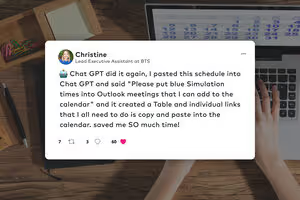
The tools are out there and easy to find
There are many tools available to use AI to do serious work with AI. Many companies – like ours – have set up a portfolio of resources – some proprietary, some not—for their internal teams to use, and also to share with clients. That is a great place to start. You will find there are an abundance of articles out there now with functional or industry-specific ways to tap into the available technologies like ChatGT, to provide you with even more insights to get started. It’s easy to ramp up quickly to do serious work - get advice, discover insights, generate ideas, write, produce reports, fill out forms, discuss strategy, craft proposals, etc.….and the resources are available to you 24x7. The bottom line is that whatever you do at work, you can ask AI. Follow the Golden Rules, and you will do this safely.
The resources keep getting better
If you are among those people tinkering, then you will have noticed AI can do a lot more today than the last time you looked. Like what? IT can connect to the internet, make images. do data analysis, watch video, read files, and work with documents. You can also create your own bespoke GPTs. The point is you can do it all on your own. You don’t need contractors. You don’t need digital experts. You can do it yourself, or with your team, today. Of note…so can your competitors. They already are and getting great benefits. So consider that when you are next faced with the option to try it – or not—to help you get more work done, better, and more quickly.
Your AI is already obsolete
It’s worth noting that by the time you read this, the list of capabilities above might already be outdated. For sure the version of AI you are using today is the weakest version you will ever use in your lifetime. As good as AI is today, today is as bad as it will ever get. You are working today with the “Shoe Phone” of AI. And that’s being generous. The next round of AI models will be way more capable. And those with the mindset and skillset to use them will benefit exponentially more from those new capabilities. Those who don’t, won’t.
So believe the hype. Help others get unstuck. And use your tools to learn, practice and master working with AI. For those who do, things will only get better, and more exciting, from here.
Want more inspiration about using AI in your business? Check out this post.
.avif)
Empowering life sciences leaders to build a winning leadership culture after a spin-off
Client need
In the dynamic world of life sciences, innovation is the key to progress. For one global leading company, the focus wasn’t just on innovating within their labs—it was about applying the same mindset to the development of their leaders. Emerging from a series of reorganizations and spin-offs, this forward-thinking company faced a new era. While their technical and functional expertise was unparalleled, they recognized an urgent need to equip mid-to-senior-level managers with the skills to lead in a way that unlocked their teams full potential. The challenge was clear: build a leadership culture that transcends silos, empowers teams, and strengthens collaboration across the business. These leaders needed to be people-first and cross-functionally focused, balancing their own functional goals with the broader success of the organization. The company set a bold goal: to transform their high-potential (Hi-Po) leadership development program into a catalyst for leaders who inspire confidence, foster engagement, and energize their teams during times of change. Their vision was ambitious:
- Create a leadership culture rooted in empowerment, where leaders multiply the intelligence and potential of their teams.
- Foster a cross-functional mindset to enhance collaboration and align with broader organizational goals.
- Equip leaders with the tools and confidence to stabilize and energize teams during times of uncertainty.
This wasn’t just about developing new skills—it was about creating a sustainable leadership culture that would support the company’s long-term ambitions.
Solution
BTS partnered with the company to bring this vision to life by embedding the BTS Multipliers framework into the clients existing leadership development journey curriculum—a transformative approach to leadership grounded in the belief that the best leaders don’t just grow themselves; they grow others. The Multipliers module integrated seamlessly into the company’s existing leadership journey, providing a practical, immersive experience that redefined how participants thought about leadership. At the heart of the Multipliers philosophy is a simple but powerful idea:
- Multipliers are leaders who amplify the intelligence, energy, and capability of their teams, inspiring people to give their best.
- In contrast, Diminishers—often unintentionally—undercut team potential by micromanaging, controlling, or failing to trust.
Through the module, participants learned how to:
- Identify their own “Accidental Diminisher” tendencies and reframe them to empower their teams.
- Foster an environment where team members felt safe, supported, and encouraged to contribute their ideas.
- Shift focus from “being the smartest in the room” to building a team of smart, engaged contributors.
The program delivered this transformation through:
- Interactive workshops: Participants engaged in simulations and real-world scenarios, applying the concepts of Multipliers and Diminishers to their daily leadership challenges.
- Peer learning opportunities: Facilitated discussions expanded networks and created spaces for shared insights and problem-solving.
- Storytelling and influence-building exercises: These moments helped participants align their leadership approach with cross-functional priorities, enhancing their ability to lead collaboratively.
The Multipliers program wasn’t just a learning event—it was a transformation in mindset, empowering leaders to drive impact across their teams and the business.
Results
The company’s commitment to bold, innovative leadership development delivered measurable results:
- Empowered leadership: Leaders embraced their roles as Multipliers, unlocking the potential of their teams and creating an environment of trust and high performance.
- Stronger collaboration: Participants developed a cross-functional mindset, breaking down silos and driving alignment across departments.
- Confidence in the future: Teams emerged more engaged and equipped to tackle challenges with clarity and energy.
By the numbers:
- 83% of participants rated the Multipliers module as effective or very effective.
- The program received an overall score of 4.2 out of 5 for its impact, with participants praising its practical and engaging design.
Participant reflections
“Learning about Multipliers and Accidental Diminishers was one of the most valuable sections of the program.”
“The Multipliers session was great—simple, memorable concepts that I could immediately apply in my role as a leader.”
“The simulation was not only fun, but it also sparked meaningful conversations and collaborative problem-solving.”
“I gained valuable insights into how I can harness the intelligence of my team and avoid unintentionally limiting their potential.”

From compliance to confidence: Empowering Ibercaja Bank’s teams to drive smarter decisions
Client need
Ibercaja Bank, a well-established European financial institution with a strong history of serving its communities, recognized the importance of evolving its operations to meet new regulatory demands while staying true to its mission of empowering its people and supporting its customers. Balancing these priorities meant addressing the European Central Bank's (ECB) requirements for aligning asset operations with risk-adjusted return on capital (RAROC) principles—a necessary step to ensure sustainable profitability.
As a customer-focused organization, Ibercaja was committed to equipping its branch managers and client-facing professionals with the tools and knowledge to succeed in this new environment. The bank introduced a suite of resources, including a RAROC calculation tool, online learning modules, and a “pricing circuit,” to help its employees integrate RAROC into their daily decision-making processes.
However, initial feedback revealed that some employees viewed these tools as procedural burdens rather than opportunities to drive better decisions and outcomes for the bank and its customers.
This prompted Ibercaja to take a thoughtful and strategic approach to improvement, identifying key areas to ensure that its employees not only embraced RAROC but also felt confident using it to strengthen relationships with customers. The bank focused on:
- Helping employees shift from transactional goals to sustainable, long-term profitability to benefit both the business and its customers.
- Building awareness of how effective capital allocation could enhance financial performance and customer offerings.
- Equipping branch managers and client-facing teams with the financial skills to use RAROC as a practical and empowering tool.
- Encouraging a mindset that viewed RAROC not as a compliance task but as a way to deliver better outcomes for customers and the bank.
By addressing these areas, Ibercaja sought to empower its people to deliver even greater value to customers while aligning with regulatory standards—strengthening its reputation as a thoughtful and innovative financial institution.
Solution
Ibercaja Bank partnered with BTS to create a practical, engaging training program that supported its branch managers and client-facing teams in navigating the complexities of the RAROC framework. The program was designed to help employees connect RAROC principles directly to their daily responsibilities, equipping them with the skills and confidence to make informed decisions that benefited both the bank and its customers.
Recognizing the diverse needs of its workforce, the training was tailored for two distinct groups:
- Tool Connoisseurs: Employees already familiar with RAROC and managing complex operations, who needed advanced insights to maximize the tool’s strategic value.
- Non-Tool Connoisseurs: Employees newer to RAROC, who required foundational knowledge to apply the framework effectively and with confidence.
The program was rolled out in three carefully designed phases:
- Collaborative Design and Roadmap: BTS worked closely with Ibercaja’s leaders across finance, risk, marketing, and retail banking to identify the unique needs of each employee group. Together, they developed a clear roadmap with tailored goals, customized content, and a training plan aligned with the bank’s strategic priorities.
- Pilot Sessions: To ensure relevance and effectiveness, the program was tested with 34 employees through pilot sessions. These sessions included interactive exercises and real-world simulations to help participants see how RAROC connected to profitability and decision-making in their roles. Participants practiced pricing decisions in realistic scenarios and provided valuable feedback to refine the final program design.
- Full-Scale Rollout and Simulations: The final phase included hands-on "know-how" sessions to deepen employees’ financial understanding and help them confidently apply RAROC concepts. Tool Connoisseurs participated in one-day sessions focused on advanced applications, while Non-Tool Connoisseurs attended shorter sessions to build foundational skills. Both groups engaged in simulations and decision-making exercises that connected learning to action. Participants left each session with actionable plans to apply their new knowledge immediately in their roles.
By tailoring the training to Ibercaja’s specific needs and fostering collaboration across teams, BTS ensured the program resonated with employees and aligned seamlessly with the bank’s strategic goals.
Results
The training delivered measurable and lasting impact, transforming RAROC from a regulatory requirement into a strategic asset that empowered employees to make more effective decisions:
- Widespread adoption: 84% of new operations were priced using the RAROC calculator, reflecting a significant shift in behavior and mindset across the organization.
- Extensive participation: Over 1,100 employees from multiple departments completed the program, promoting collaboration and a shared understanding of profitability goals.
- Tangible outcomes: Participants drove more than 460 initiatives that enhanced cost-effectiveness, refined pricing strategies, and improved profit margins, strengthening the bank’s overall performance.
Feedback from participants underscored the program’s success:
- Both Tool Connoisseurs and Non-Tool Connoisseurs rated the program an impressive 4.6 out of 5
- Facilitators earned strong Net Promoter Scores (NPS) of 79% and 76%, indicating high satisfaction and engagement.
Beyond individual improvements, the training fostered a culture of strategic thinking and collaboration. By equipping employees with the tools to make better decisions and align their efforts with the bank’s broader priorities, Ibercaja Bank reinforced its commitment to delivering exceptional value to both its customers and its stakeholders. This focus on profitability, efficiency, and customer satisfaction positioned the bank for continued growth and long-term success.
.avif)
Accelerating market-ready innovation at Starbucks
Client need
Starbucks sought to differentiate itself in the highly competitive tea market across the Asia-Pacific region. To achieve this, Starbucks needed to foster a culture of innovation, equipping its teams with the tools and collaborative processes to create new tea concepts. Their goal was to develop innovative, market-ready ideas that could appeal to diverse customer preferences and drive brand growth. The challenge was to accelerate the ideation process while ensuring the ideas were both feasible and aligned with customer needs.
Solution
To address this, Starbucks partnered with BTS to design and deliver the 3-day Innovation Tea Summit. This immersive summit guided 28 Starbucks partners from 9 countries through a structured design-thinking process to co-create breakthrough tea concepts. The process included five key stages—defining intent, exploring needs, ideating, refining, and planning small-scale testing. The summit brought these stages to life through the following core activities:
- Customer understanding and insight gathering: Participants kicked off with a deep dive into customer behaviors, using tools like observation, interviews, and empathy exercises to uncover unmet needs. Teams created detailed customer journey maps, identifying pain points and opportunities, and refined these insights into actionable need statements.
- Ideation and creative prototyping: Armed with customer insights, participants engaged in creative ideation sessions, generating a large volume of ideas without judgment to maximize bold and unique solutions. These ideas were refined with feedback from peers, industry experts, and product designers. Prototyping activities brought the ideas to life, blending creativity with feasibility through sketches and live demonstrations by mixologists.
- Experimentation and strategic planning: Participants explored disciplined experimentation techniques to assess the feasibility and desirability of their concepts. Using collaborative brainstorming and structured feedback, they identified next steps for testing their ideas. The summit concluded with team presentations, where participants pitched their innovative concepts and discussed the roadmap for implementation.
This comprehensive process ensured that every idea was customer-centered, innovative, and ready for accelerated market testing.
Results
The summit produced transformative results for Starbucks:
- Over 120 unique ideas: Participants created a diverse set of concepts designed to differentiate Starbucks in the tea market, with many ready for testing and refinement.
- Immediate market readiness: About 70% of the ideas were deemed feasible for testing within 6-12 months, accelerating Starbucks’ innovation timeline.
- Accelerated innovation: Teams left the summit equipped with practical tools and techniques to drive innovation more effectively, enabling them to validate and develop key ideas at a faster pace.
- Sustained engagement: Starbucks committed to ongoing collaboration between R&D and regional teams, equipping participants with a clear, repeatable innovation process to continually refine ideas and develop a pipeline of innovative products.
Testimonials
“We should conduct more of these if time and resources permit as this is a great way to share ideas and explore and challenge problems in the fastest and most efficient way. Good job to the organizers!”
“I think this is a great workshop, I’ve learned a lot. Wish there will be this kind of workshop for other functions as well such as operations, marketing, and SCO.”
“I learned that we must first start with the insight and must refrain from making assumptions that are unfounded. Focus on the need of the customer, not on the product.”
The Innovation Tea Summit not only delivered a suite of exciting new tea ideas for Starbucks but also empowered participants with a repeatable innovation process. This sets the stage for sustained growth, customer-centric differentiation, and ongoing success in the competitive beverage market.
.jpg)
Empowering aspiring leaders to sustain growth in cloud-based technology
Client need
A cloud-based technology leader experiencing rapid expansion and a digital transformation surge needed a fresh approach to developing future leaders. During the pandemic, the company’s workforce grew from a small founding team to tens of thousands of employees spread globally. With such rapid scale growth, the organization needed to strengthen leadership capabilities to maintain employee engagement and support sustainable performance. Sustaining engagement and long-term performance required strong leadership development to guide this fast-growing, globally dispersed workforce.
The company sought a program to offer personalized support for high-potential employees stepping into leadership roles. It needed to cater to regional learning styles while delivering a tailored experience for each participant.
Building on previous programs
An initial leadership program had laid the groundwork, but the company’s changing needs called for a strategic overhaul. Key enhancements included:
- Aligning with a new Leadership Pathway, outlining essential skills and traits.
- Reducing the program from 12 to 7 months to match promotion cycles.
- Incorporating participant feedback to refine content and format.
- Adding virtual simulations for flexible, real-world learning experiences.
- Embedding learning into daily tasks, ensuring continuous application.
Solution
The company partnered with BTS to implement a seven-month Aspiring Leader’s Program to reach over 10,000 emerging leaders in multiple cohorts. BTS developed a blended learning approach that combined traditional and digital elements for a scalable, high-impact experience:
- Assessments: 30-minute pre- and post-program assessments presented realistic leadership challenges, helping participants set personalized goals aligned with company standards.
- Small group coaching (pods): Groups of seven worked with a BTS facilitator, forming supportive relationships that continued beyond the program.
- Workshops and simulations: In three virtual workshops, pods tackled common leadership scenarios. Participants experienced the real-time impact of decisions, competing with other pods. Self-paced versions provided additional flexibility.
- Self-paced simulations: Cinematic simulations addressed critical skills in an immersive, realistic format.
- Stretch assignments: Each module included hands-on assignments with three levels of activity, allowing participants to apply skills at a pace that suited their roles.
- Alumni portal: Additional resources like articles, podcasts, and talks were accessible on the alumni portal, supporting ongoing development.
- Streamlined communications: Weekly updates on a virtual portal and internal messaging channels kept participants engaged and informed.
Results
The program drove significant progress, with over 1,000 leaders reporting notable improvements:
- 89% felt greater clarity on their personal purpose.
- 92% were more comfortable seeking diverse perspectives.
- 93% gained stronger awareness of their emotional states.
- 91% felt better equipped to handle stress.
By the time of review, participants had completed over 57,000 on-the-job actions, with 96% noting substantial progress in self-awareness and behavior shifts. The program achieved a 92% attendance rate, ensuring aspiring leaders were well-prepared to lead and guide the organization into a successful future.

Transforming leadership culture for enterprise alignment
Client need
To continue competing and winning in a complex industry, a multinational energy corporation recognized the need to change its ways of working. To achieve sustainable success for its Australian branch, the organization needed to shift from a project-focused operation to a unified business culture.To make this transformation a reality, the organization identified a need for aligned enterprise mindsets, enabling leaders to internalize the new strategy and develop new leadership behaviors.
Solution
In service of this need, BTS and the organization co-created an immersive, in-person simulation experience. The experience projected a customized business portrait 30 years into the future, designed to:
- Guide leaders on optimization strategies.
- Foster relationship-building.
- Encourage personal development.
- Portray realistic, on-the-job challenges while coaching solutions.
The project team developed the program over three phases to ensure maximum effect, turning themes and objectives gathered from stakeholder interviews and pilot-test feedback into tangible, experiential materials and activities including:Scenario-based roleplaying
- Cohorts compiled of leaders from diverse backgrounds and skillsets were provided with case study scenarios reflective of their real-life roles, tasked with developing effective strategies against common restraints like time, budget, client profiles, and geopolitics.
- Through this activity, players learned decision-making through collaboration and healthy competition, balancing short- and long-term goals in a simulated environment encouraging trial-and-error.
- Each simulation round was followed by debrief sessions, allowing teams to reflect on how their individual and group strategies affect business operations—a vital component for sustainable growth.
Behavioral guides
- Leaders were provided with helpful resources for navigating the company’s operation transition, promoting enterprise thinking through industry surprises like timeline alterations, decision-making under pressure, and prioritizing quality over targets.
- A Leadership Q&A event was held to address concerns, provide clarity, and reinforce the company’s vision and values to empower and engage leaders mid-journey.
Coaching sessions
- Amidst team leadership building, coaches offered individual, personalized guidance for participants following each simulation round.
- Presented opportunities for performance and lesson reflection, as well as goal-planning and application back on the job.
Results
The program’s ROI was measured by performance data, behavioral assessments, and participant feedback, with an NPS score of 80, surveyed across 500 leaders from 15 cohorts.Post-journey, participating leaders credited the simulation for:
- Strengthened decision-making skills.
- Broadened business fluency.
- Heightened knowledge and resilience of industry complexities.
- Overall enjoyment of collaborative, game-like medium.
Testimonials
“Excellent fundamentals about impact across value chain of decision making and clearer understanding of levers used by management.”“An excellent course, this really cemented in my mind the value chain and the necessity to consider all elements of this together. Shining a light on the complexity of the business and the many drivers, metrics, and desired outcomes needed to be balanced or traded-off was very enlightening.”“Great job on asking people to represent other parts of value chain. This put all of us in a more uncomfortable place and we had to rely on each other.”“Really enjoyable course that had a great balance of simulation, discussion, and humor. Sessions were well set up and managed.”“The simulation reinforces the value of cross functional collaboration, which, along with specific insights into other areas of the business, I will continue to promote within my team.”

Developing biopharma leadership to fuel innovation in disease management
Client need
An American biopharmaceutical company set ambitious strategic goals for 2030, including advancing innovative solutions that could transform healthcare access for patients worldwide. Historically, the company operated within a hierarchical, command-and-control culture, where perfectionism fueled high expectations but often led to volatility and siloed operations.
Over time, these dynamics eroded trust, psychological safety, and empowerment, stifling creativity and exploration. The organization struggled with indirect communication, limited constructive feedback, and avoided difficult conversations—factors that not only hampered employee agility and growth but also stifled effective leadership. Recognizing the need for a comprehensive cultural transformation to achieve its strategic goals, the company partnered with BTS to reshape its leadership approach, creating a more dynamic, inclusive, and collaborative workplace.
Solution
Together, BTS and the company co-designed a five-month immersive leadership program aimed at reaching 5,000 employees across all levels during a multi-year rollout—from senior to frontline leaders.
The program’s primary focus areas included:
- Strengthening relationships and teamwork to build a more cohesive, collaborative culture
- Fostering psychological safety to create an environment where leaders feel empowered to take risks and share ideas
- Aligning leadership behaviors with the company’s strategic vision and Leadership Accountabilities.
The collaboration began with a two and a half month development phase and a 18-month rollout phase, including a six-week pilot with four initial cohorts. This pilot phase enabled the team to refine the program based on direct participant and stakeholder feedback, ensuring maximum relevance and impact before the full-scale launch. The program was rooted in vertical development models, designed to shift participants’ mindsets by introducing new perspectives and equipping them with essential skills. The primary goal was to help participants understand the critical role of stronger people leadership in the company’s future success and how to bring that to life. These objectives were achieved by focusing on building not only skills (Capability) but also self awareness, broader perspectives, different mindsets (Capacity) and Community.
The program was delivered globally, with cohorts of 30 participants each, creating an intimate, diverse learning environment. Each cohort engaged in a multi-faceted journey that included:
- Virtual kickoff: A 60-minute session where facilitators introduced program objectives and outlined expectations. Participants were given access to a multi-modal digital platform housing a comprehensive collection of resources, from reading materials to assignments and were encouraged to consider why the program was important.
- Pre-work: Designed to lay a solid foundation, participants engaged with interactive videos, podcasts, and articles to identify personal learning gaps and explore potential challenges. This preparatory phase fostered a reflective mindset, allowing participants to enter the immersion experience ready to grow.
- Three-day in-person immersive learning: Through activities, leaders practiced critical skills such as building self-awareness, developing trust, and improving relationships and communication. The program emphasized real human connection from the very beginning, starting with introductory exercises designed to foster meaningful relationships. Participants actively worked to strengthen these connections, enhancing collaboration and community. Content was organized into deepening self-awareness – managing my state and understanding my immunity to change (Day One – ME), relational skills eg. deep listening and intimate connection; coaching and employing various communication styles (Day Two – US) and using these tools to get the work done through effective empowerment, delegation, and feedback (Day Three – IT). This structure supported a progressive deep dive into personal and professional development.. The immersive experience included journaling, small and large group activities, and peer coaching, offering a balance of external collaboration and personal reflection.
- Go-Dos: After the immersion, participants were encouraged to reflect on their experiences and practice new behaviors in their daily work.
- Pods: Following each Go-Do, leaders participated in four small group coaching sessions, known as pods, formed from their immersion table groups. These formal pods were led by an immersion facilitator or an experienced coach trained in the program’s content. The pods provided a space for participants to share successes and challenges while exploring the on-the-job application of tools and concepts. They also became a safe, supportive environment for team building and relationship development.
- Ongoing support: The program included resources for continued learning and reinforcement, such as conversation guides, refresher content, online discussion forums, and networking opportunities.
Results
By April 2024, the program had reached 2,400 leaders through 94 cohorts launched globally. The program’s success is reflected in several key metrics:
- Net promoter score: 96%
- Go-Do completion rate: 98%
- Pod-coaching attendance: 90%
The program also included comprehensive pre- and post-program surveys to track leadership competency improvements. These surveys revealed a significant increase in confidence and performance across key areas, including:
- Mission and strategy alignment: +86%
- Collaboration: +77%
- Inclusion: +76%
- Engagement: +78%
- Well-being: +70%
- Overall efficiency: +57%
The success of this initiative means that the company will continue to offer the program to new and promoted people leaders. This strategic investment is helping to solidify a foundation of transformative leadership that drives the company’s goals and strengthens its competitive position.
Testimonials
“I’m really stunned at how empowered I feel to expand my leadership skills. I was truly skeptical before this.”
“This is the most impactful leadership development experience I’ve had in 15 years.”
“I was initially skeptical, having been on many training courses that achieved very little. I was pleasantly surprised at how insightful, challenging, and ultimately rewarding the sessions were.”
“This is such a shift in how we train people leaders and it’s about time we learn into this model. We are truly changing the mind to think bigger future for all.

Building a pipeline of high-performing general managers in aviation
Client need
An aviation services provider with over 200 fixed base operations (FBOs) across five continents recognized the need for a standardized approach to hiring, training, and assessing its general managers (GMs). Facing complex market dynamics like industry consolidation and rising customer expectations, the company found that GMs were now expected to act as mini-CEOs. They needed a diverse skill set to drive revenue, manage talent, ensure safety, and maintain customer satisfaction. However, without a clear development path, it was difficult to consistently prepare GMs for this demanding role.
The solution
The organization partnered with BTS to develop a comprehensive leadership framework that defined expectations and built the necessary capabilities for GMs to thrive. This solution included:
- The playbook: A foundational guide outlining:
- GM profile: Key capabilities and behaviors for GM success.
- GM pivotal moments: 11 critical scenarios requiring strong leadership.
- GM experience map: Experiences that aspiring, new, and seasoned GMs should seek to ensure they excel in the role.
- The assessment: A multifaceted tool designed to:
- Evaluate current GMs by identifying development areas aligned with the GM profile.
- Assess aspiring GMs to define what development is needed to prepare them for the role.
- Screen external candidates to determine their readiness for GM responsibilities.
The assessment comprises several components, including:
- Moments-based assessment: A simulated environment where candidates demonstrate decision-making in job-related scenarios.
- Mindset explorer assessment: Evaluates alignment with key leadership beliefs.
- 360-survey: Provides feedback on participants’ strengths and development areas.
- Work preferences assessment and panorama assessment: Explore work style preferences, critical thinking, and problem-solving skills.
Results
The playbook and assessment have enabled the organization to identify and elevate high-potential leaders across its global locations. Since launching the program, numerous GMs have been promoted to leadership roles such as area director. The structured evaluation has empowered participants to uncover performance gaps and develop targeted growth plans. One GM, recently promoted to area director after following a personalized development plan, shared, “You are given the tools to succeed, and your future is in your hands. The assessments and the courses offered are outstanding and can be life-changing.”
.jpg)
Building a future-ready CEO bench in Oil and Gas
Client need
In the fast-paced world of oil and gas, robust executive bench strength is essential for sustained success. Anticipating a CEO transition within the next five to ten years, a leading industry player recognized an urgent need to diversify and enhance their leadership capabilities. To tackle this, they enlisted BTS to assess their executives for future key roles and equip them with the skills and insights needed to thrive in a complex market environment.
Solution
BTS designed custom, forward-looking CEO and senior leader profiles that reflected turbulent market conditions and energy transition challenges within the oil and gas industry. These profiles were deeply rooted in the client’s values to ensure the assessments were grounded in the company’s culture. The BTS team then developed a customized business and strategy simulation that was used in a "Leader Lab” to translate these profiles into an engaging learning and development experience and observable behaviors. The Leader Lab was delivered for 25 executives divided into teams of five, each with an embedded assessor. This structure allowed for a comprehensive evaluation of participants as individual leaders, team members, and strategic executives leading the enterprise.
Results
To date, BTS has assessed the top 100 executives and provided the client with a detailed heat map that highlights strengths and development areas to strengthen their succession planning. This data has also been instrumental in shaping development plans and retention strategies. Key outcomes include:
- Identification of high-potential leaders: One standout participant from the supply chain function demonstrated exceptional capabilities, leading them to step into a new global role to leverage their leadership potential.
- Targeted development for future CEOs: After the assessments, the client’s anticipated successor for the CEO role did not initially rank in the top five executives. With the help of an executive coach, this individual showed significant improvement evidenced by positive feedback from direct reports.
- Addressing leadership gaps: The assessments revealed a lack of a shared leadership language and foundational business acumen beyond functional expertise. BTS now partners with the client to address these gaps through ongoing Leader Labs, aimed at enhancing the depth and breadth of organizational leadership.
By uncovering hidden leadership potential and addressing critical gaps, the company identified high-potential leaders ready to step into key roles. As a result, the company now boasts a robust and cohesive leadership team, well-prepared for the CEO transition and future industry challenges. This investment in leadership development has poised the company for sustained success and innovation in a turbulent market.

From burnout to breakthrough: a transformation in Nursing leadership
Client need
A leading global healthcare organization faced a critical challenge post-pandemic: the well-being of their nursing staff. With burnout, early retirements, and a labor shortage threatening the quality of care, they turned to BTS for a solution. Together, we set out to strengthen nursing leadership, build resilience, and ensure sustainable, high-quality patient care in this new era.
Solution
In collaboration with BTS, the organization developed a two-month, immersive program designed to strengthen leadership capabilities and build resilience among their nursing staff. Leveraging in-depth interviews and an understanding of the organization’s unique culture, BTS created a customized simulation that mirrored the real-world challenges nurses face daily.
The program, delivered virtually over two and a half days, combined pre-work, engaging kickoff sessions, and realistic hospital scenarios. Participants from diverse teams worked through complex simulations, receiving feedback and engaging in reflective exercises. Key components, including actionable “Go-Dos” and a follow-up accountability check-in, ensured that the learning was sustained and immediately applicable to their roles.
Results
The impact was transformative. The program not only reignited engagement but also fostered a deep sense of ownership and leadership among nurses. Participants rated the experience an exceptional 4.8/5, with a net promoter score of 91%, reflecting the powerful alignment between the program and their real-world challenges.
Beyond the numbers, the program drove tangible shifts in behavior—nurses reported enhanced teamwork, stronger decision-making, and a renewed sense of purpose in their roles. Many credited the experience with helping them build the confidence and resilience needed to navigate the complexities of post-pandemic healthcare, leading to improved patient outcomes and more cohesive teams. The lasting effect? A healthcare organization better equipped to support its frontline leaders and deliver exceptional care.
Testimonials
“We were able to discuss the challenges faced in various hospitals and get ideas to solve the issues.”
“Fantastic moments and realistic dilemma options that allows us to really reflect on our choices.”
Go-Do reflections
“Practicing listening skills has helped to keep the dialogue open. Staff are more willing to bring out discussion points freely. Listening intently allows me to understand the information being presented to me, and not make a decision midway through the conversation. Staff feel that they are heard. I have learnt to refrain from the temptation of jumping to conclusions or forming opinions about what is being said. Use the coaching methodology instead of being prescriptive.”
“I managed to meet my Nurse Manager and staff on the ground daily and spend at least one to two hours with them. We had a great discussion, and I listened to the problems the Nurse Manager was facing with staffing constraints—high turnover of staff and managing junior nurses. I worked with her to manage the staffing issues, and the Nurse Manager and staff fed back to me that they appreciate my time and efforts spend with them.”
Explore our podcast series
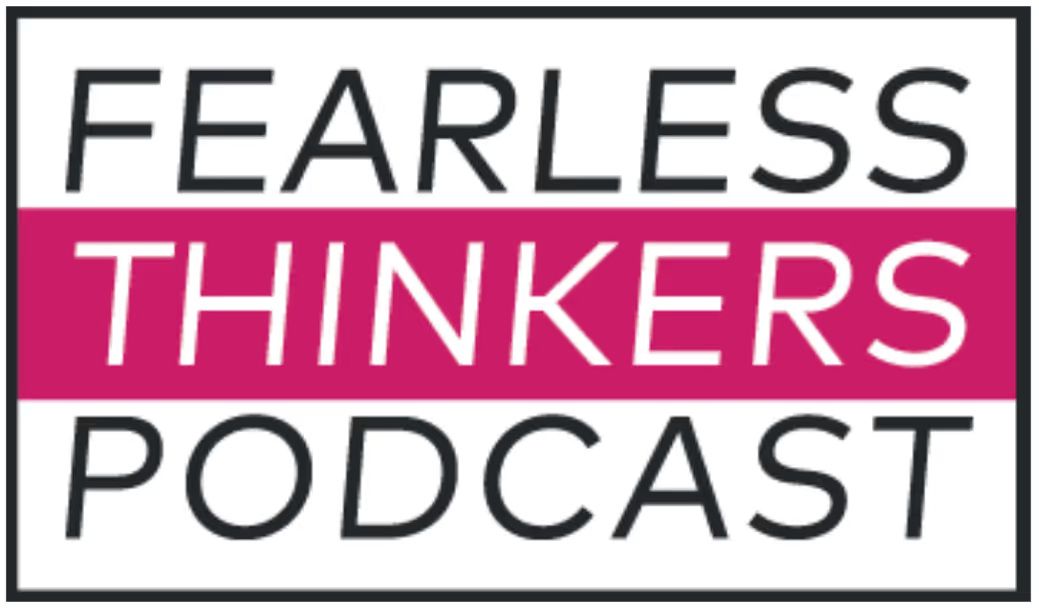
Fearless Thinkers
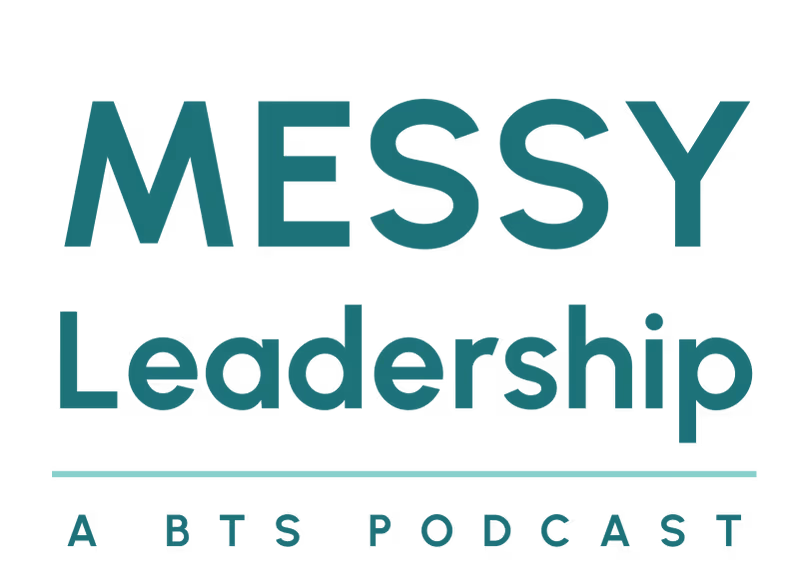
MESSY Leadership
%20(24).avif)
Undiscovered Country
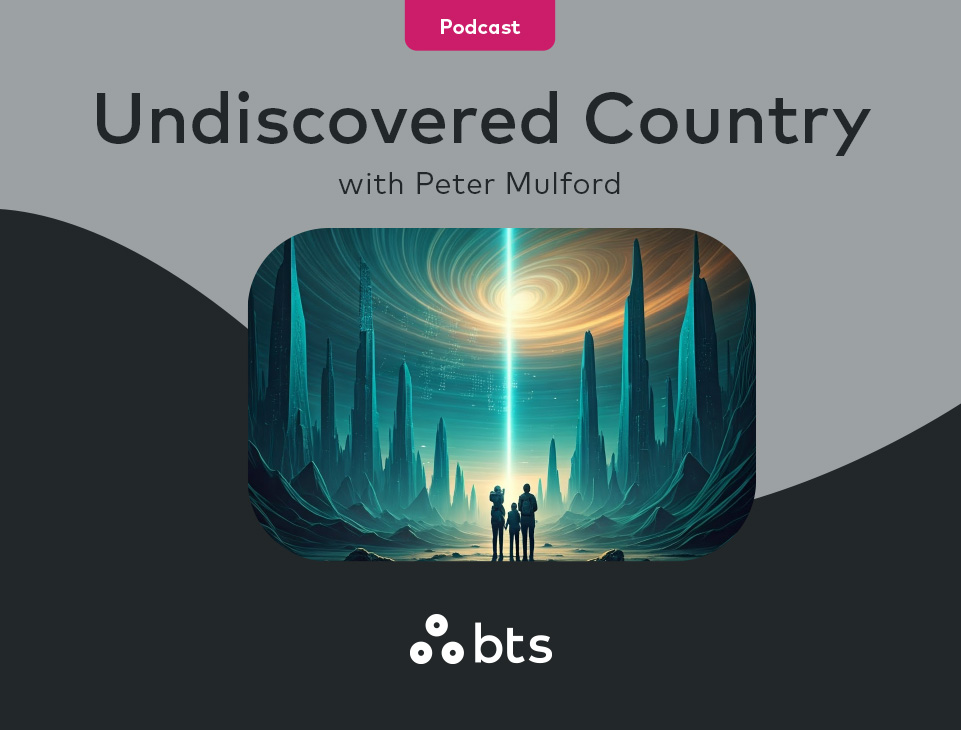
Future Focus: A Look Beyond with Peter Mulford and Peter Coffee
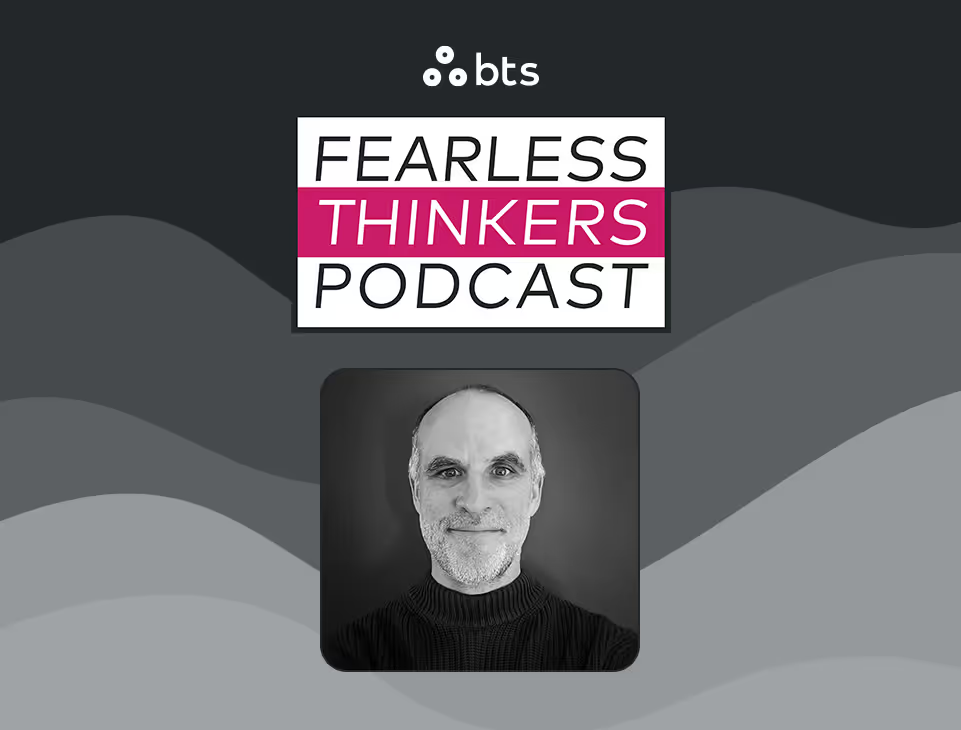
Transforming the future of work: AI’s impact on leadership and innovation
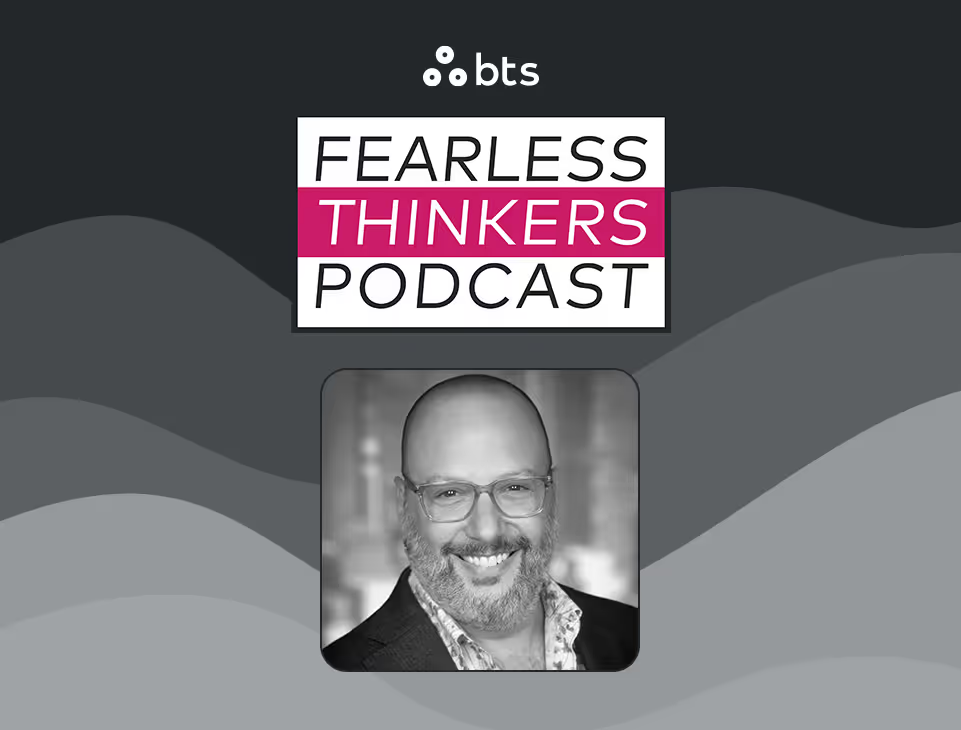
Future-back thinking: The roadmap to effective leadership profiles

5 mind traps limiting your sales team’s performance
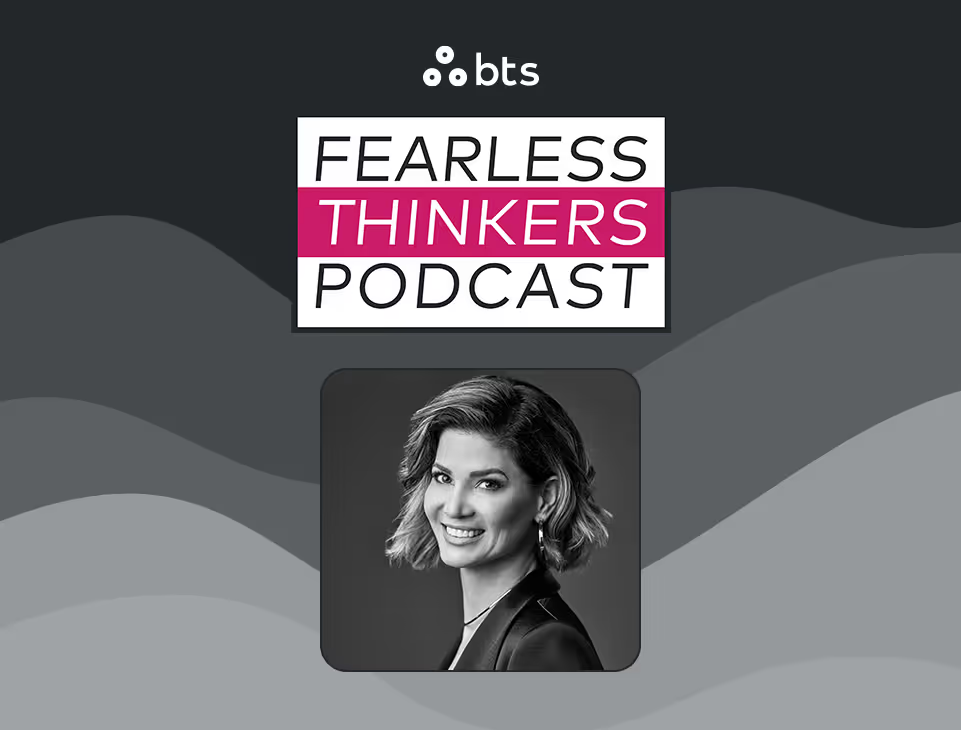
Lessons from a journey of leadership and learning
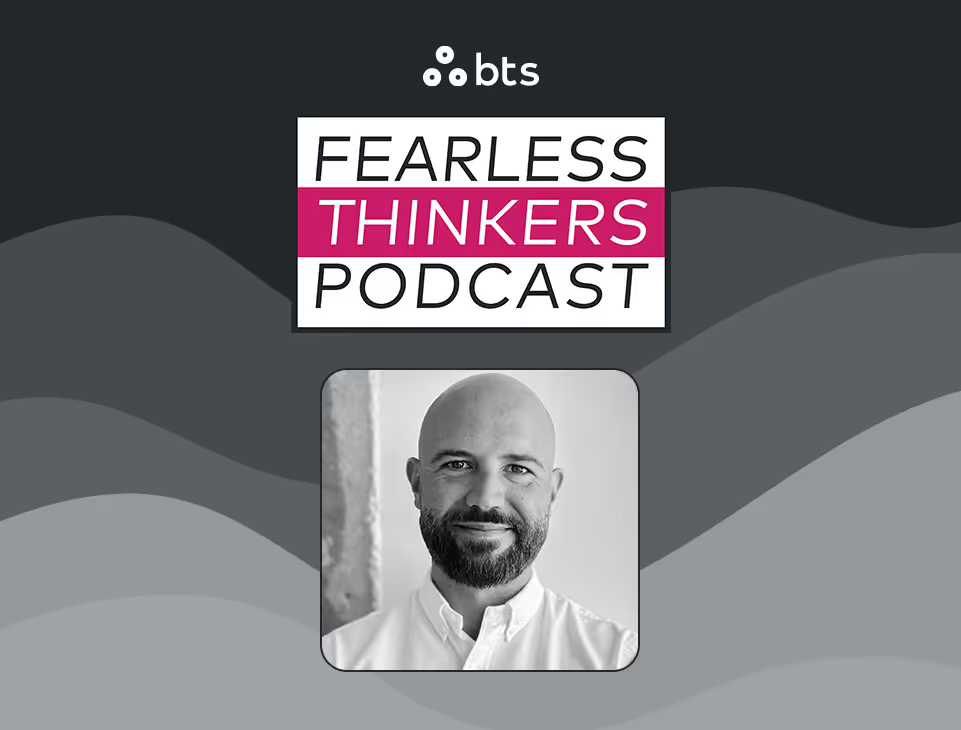
Revolutionizing sales: How AI coaching is shaping the future
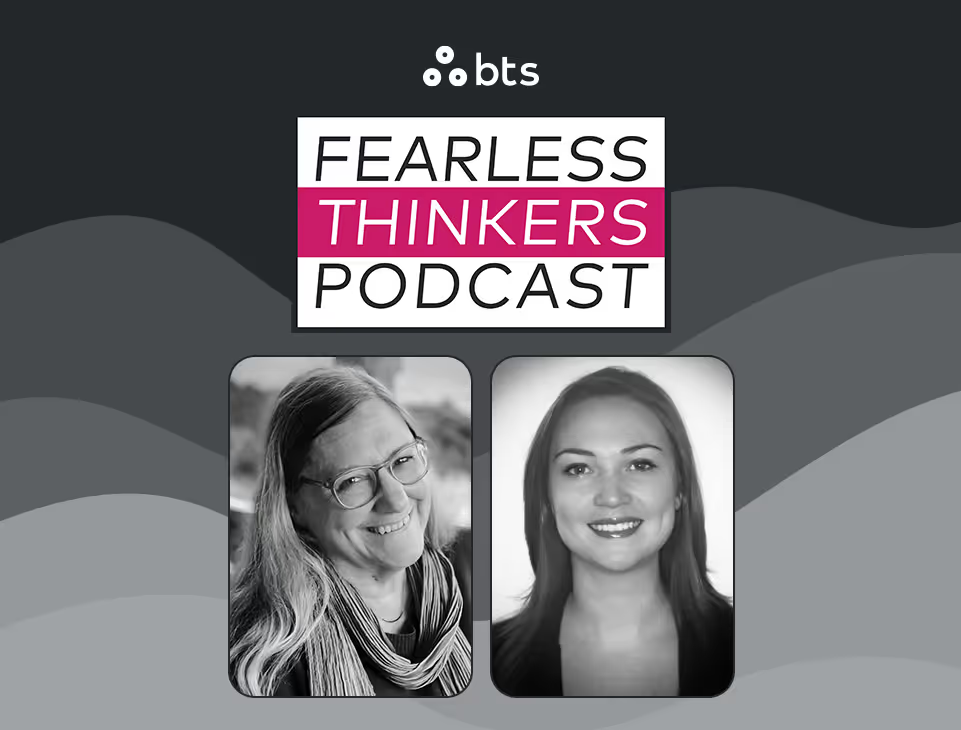
Strategy planning reinvented: The fast path to action and ownership
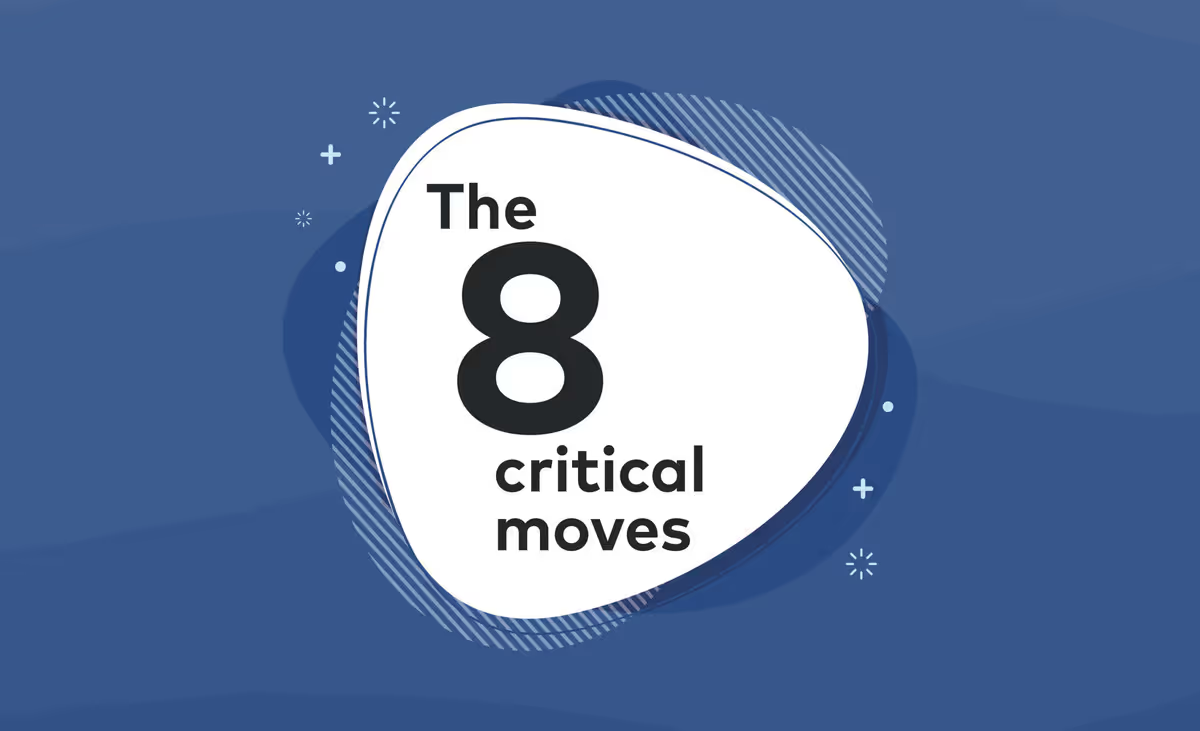
Scaling the learning culture (EMEA)

Culture - the missing ingredient

Scaling the learning culture

Accelerating the talent system (EMEA)

Accelerating the talent system

Making bold investments in leadership

Making bold investments in leadership

Jessica Skon delivers acceptance speech as one of Consulting Magazine's 2022 Women Leaders in Consulting

2023 Leadership trends
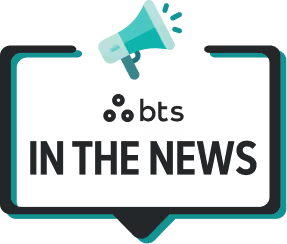

«Identificar a futuros líderes es una cuestión clave para cualquier organización» | Dirigentes
André Ribeiro aborda el papel que deben ocupar los responsables dentro de las empresas y cómo identificar los mejores perfiles.

Simulaciones de negocio: un aprendizaje de alto impacto para entornos dinámicos | elEconomista
A lo largo de la historia, la humanidad ha demostrado una capacidad admirable para adaptarse y evolucionar, también en lo que respecta a nuestra manera de aprender y de enfrentar desafíos.

4 strategic priorities to unlock HR leaders’ potential in 2025
In the rapidly evolving business landscape, the CHRO role continues to be indispensable for organizational success. According to a recent Accenture survey, 89% of CEOs believe CHROs should have a central role in driving long-term growth, highlighting the increasing recognition of HR’s impact on organizational performance and culture. However, only 45% of those CEOs are creating the conditions to allow CHROs to have an impact.

La adaptación de las empresas al entorno, clave para superar el muro de los cinco años de vida | ABC
El 60% de las compañías no superan los cinco años de vida según datos de Eurostat. En la próxima década, el 50% de las empresas a nivel global del índice S&P 500 serán sustituidas por otras nuevas.

BTS acquires Sounding Board to serve global companies end-to-end, executive to frontline coaching needs
STOCKHOLM, SWEDEN – BTS Group AB (publ), a leading global consultancy specializing in strategy execution, change, and people development, has agreed to acquire Sounding Board, a technology-based leader in scalable, high-impact coaching solutions driving transformational leadership development.

From Behind the Scenes to Strategic Partner: HR’s Impact on GTM - HR Daily Advisor
HR’s strategic role ensures that all efforts are aligned with the overarching GTM strategy.

Why Work-Life Balance Is Overrated — and What to Pursue Instead | Entrepreneur
Managing quality, not time, is the secret to thriving personally and professionally.

Succession Planning 101: Overcome the five biggest challenges in preparing for a handoff - Real Leaders
Learn how to overcome the top five challenges in succession planning, from building transparency to creating readiness, and ensure a smooth leadership transition.
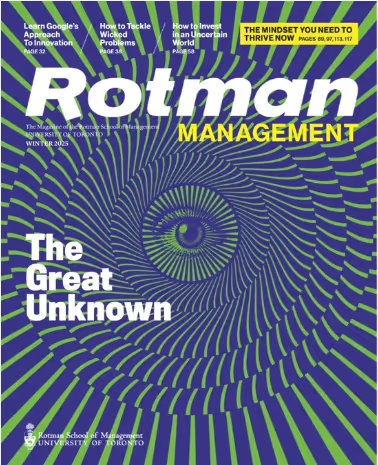
How to cultivate braver conversations
Discover how leaders can foster trust, innovation, and engagement by creating braver conversations. Learn key strategies to transform dialogue.

February 2025 Newsletter
Heading 1
Heading 2
Heading 3
Heading 4
Heading 5
Heading 6
Lorem ipsum dolor sit amet, consectetur adipiscing elit, sed do eiusmod tempor incididunt ut labore et dolore magna aliqua. Ut enim ad minim veniam, quis nostrud exercitation ullamco laboris nisi ut aliquip ex ea commodo consequat. Duis aute irure dolor in reprehenderit in voluptate velit esse cillum dolore eu fugiat nulla pariatur.
Block quote
Ordered list
- Item 1
- Item 2
- Item 3
Unordered list
- Item A
- Item B
- Item C
Bold text
Emphasis
Superscript
Subscript
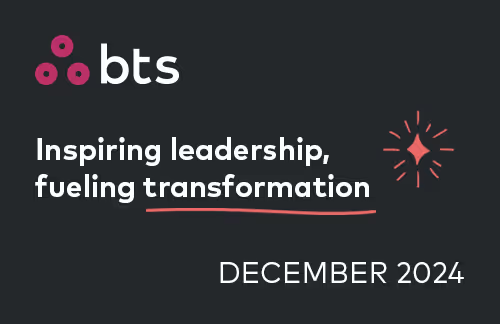
December 2024 Newsletter
Heading 1
Heading 2
Heading 3
Heading 4
Heading 5
Heading 6
Lorem ipsum dolor sit amet, consectetur adipiscing elit, sed do eiusmod tempor incididunt ut labore et dolore magna aliqua. Ut enim ad minim veniam, quis nostrud exercitation ullamco laboris nisi ut aliquip ex ea commodo consequat. Duis aute irure dolor in reprehenderit in voluptate velit esse cillum dolore eu fugiat nulla pariatur.
Block quote
Ordered list
- Item 1
- Item 2
- Item 3
Unordered list
- Item A
- Item B
- Item C
Bold text
Emphasis
Superscript
Subscript
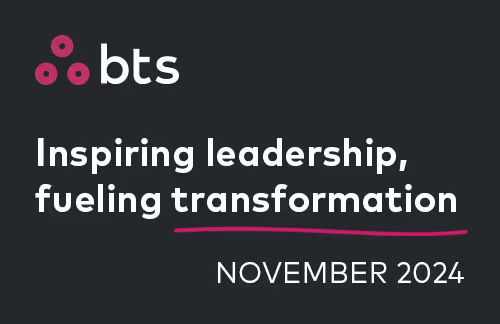
November 2024 Newsletter
Heading 1
Heading 2
Heading 3
Heading 4
Heading 5
Heading 6
Lorem ipsum dolor sit amet, consectetur adipiscing elit, sed do eiusmod tempor incididunt ut labore et dolore magna aliqua. Ut enim ad minim veniam, quis nostrud exercitation ullamco laboris nisi ut aliquip ex ea commodo consequat. Duis aute irure dolor in reprehenderit in voluptate velit esse cillum dolore eu fugiat nulla pariatur.
Block quote
Ordered list
- Item 1
- Item 2
- Item 3
Unordered list
- Item A
- Item B
- Item C
Bold text
Emphasis
Superscript
Subscript
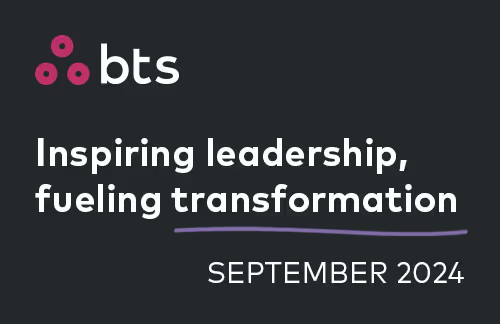
September 2024 Newsletter
Heading 1
Heading 2
Heading 3
Heading 4
Heading 5
Heading 6
Lorem ipsum dolor sit amet, consectetur adipiscing elit, sed do eiusmod tempor incididunt ut labore et dolore magna aliqua. Ut enim ad minim veniam, quis nostrud exercitation ullamco laboris nisi ut aliquip ex ea commodo consequat. Duis aute irure dolor in reprehenderit in voluptate velit esse cillum dolore eu fugiat nulla pariatur.
Block quote
Ordered list
- Item 1
- Item 2
- Item 3
Unordered list
- Item A
- Item B
- Item C
Bold text
Emphasis
Superscript
Subscript
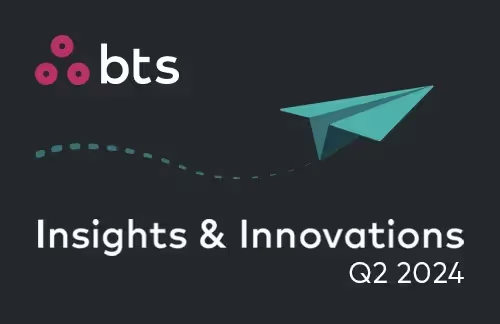
Q2 2024 Newsletter
Heading 1
Heading 2
Heading 3
Heading 4
Heading 5
Heading 6
Lorem ipsum dolor sit amet, consectetur adipiscing elit, sed do eiusmod tempor incididunt ut labore et dolore magna aliqua. Ut enim ad minim veniam, quis nostrud exercitation ullamco laboris nisi ut aliquip ex ea commodo consequat. Duis aute irure dolor in reprehenderit in voluptate velit esse cillum dolore eu fugiat nulla pariatur.
Block quote
Ordered list
- Item 1
- Item 2
- Item 3
Unordered list
- Item A
- Item B
- Item C
Bold text
Emphasis
Superscript
Subscript
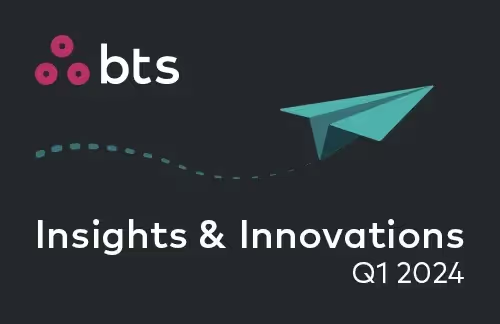
Q1 2024 Newsletter
Heading 1
Heading 2
Heading 3
Heading 4
Heading 5
Heading 6
Lorem ipsum dolor sit amet, consectetur adipiscing elit, sed do eiusmod tempor incididunt ut labore et dolore magna aliqua. Ut enim ad minim veniam, quis nostrud exercitation ullamco laboris nisi ut aliquip ex ea commodo consequat. Duis aute irure dolor in reprehenderit in voluptate velit esse cillum dolore eu fugiat nulla pariatur.
Block quote
Ordered list
- Item 1
- Item 2
- Item 3
Unordered list
- Item A
- Item B
- Item C
Bold text
Emphasis
Superscript
Subscript
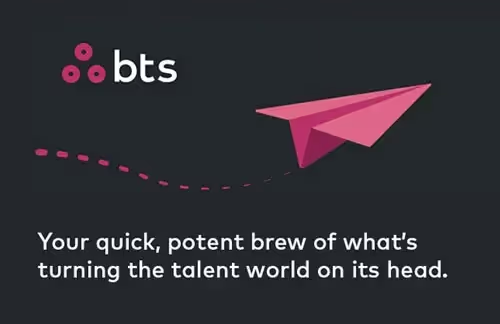
Q4 2023 Newsletter
Heading 1
Heading 2
Heading 3
Heading 4
Heading 5
Heading 6
Lorem ipsum dolor sit amet, consectetur adipiscing elit, sed do eiusmod tempor incididunt ut labore et dolore magna aliqua. Ut enim ad minim veniam, quis nostrud exercitation ullamco laboris nisi ut aliquip ex ea commodo consequat. Duis aute irure dolor in reprehenderit in voluptate velit esse cillum dolore eu fugiat nulla pariatur.
Block quote
Ordered list
- Item 1
- Item 2
- Item 3
Unordered list
- Item A
- Item B
- Item C
Bold text
Emphasis
Superscript
Subscript

Talent Watch Q4 2023
Heading 1
Heading 2
Heading 3
Heading 4
Heading 5
Heading 6
Lorem ipsum dolor sit amet, consectetur adipiscing elit, sed do eiusmod tempor incididunt ut labore et dolore magna aliqua. Ut enim ad minim veniam, quis nostrud exercitation ullamco laboris nisi ut aliquip ex ea commodo consequat. Duis aute irure dolor in reprehenderit in voluptate velit esse cillum dolore eu fugiat nulla pariatur.
Block quote
Ordered list
- Item 1
- Item 2
- Item 3
Unordered list
- Item A
- Item B
- Item C
Bold text
Emphasis
Superscript
Subscript
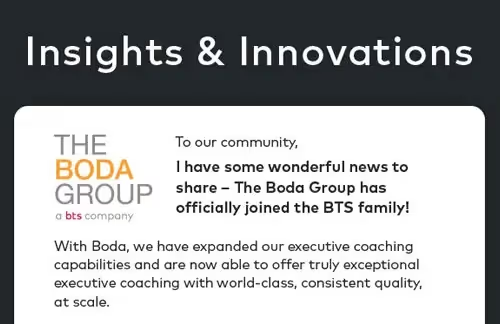
Q3 2023 Newsletter
Heading 1
Heading 2
Heading 3
Heading 4
Heading 5
Heading 6
Lorem ipsum dolor sit amet, consectetur adipiscing elit, sed do eiusmod tempor incididunt ut labore et dolore magna aliqua. Ut enim ad minim veniam, quis nostrud exercitation ullamco laboris nisi ut aliquip ex ea commodo consequat. Duis aute irure dolor in reprehenderit in voluptate velit esse cillum dolore eu fugiat nulla pariatur.
Block quote
Ordered list
- Item 1
- Item 2
- Item 3
Unordered list
- Item A
- Item B
- Item C
Bold text
Emphasis
Superscript
Subscript
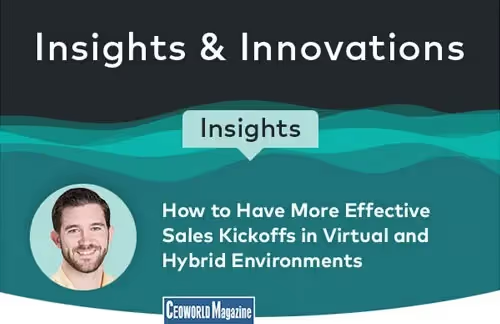
Q2 2023 Newsletter
Heading 1
Heading 2
Heading 3
Heading 4
Heading 5
Heading 6
Lorem ipsum dolor sit amet, consectetur adipiscing elit, sed do eiusmod tempor incididunt ut labore et dolore magna aliqua. Ut enim ad minim veniam, quis nostrud exercitation ullamco laboris nisi ut aliquip ex ea commodo consequat. Duis aute irure dolor in reprehenderit in voluptate velit esse cillum dolore eu fugiat nulla pariatur.
Block quote
Ordered list
- Item 1
- Item 2
- Item 3
Unordered list
- Item A
- Item B
- Item C
Bold text
Emphasis
Superscript
Subscript
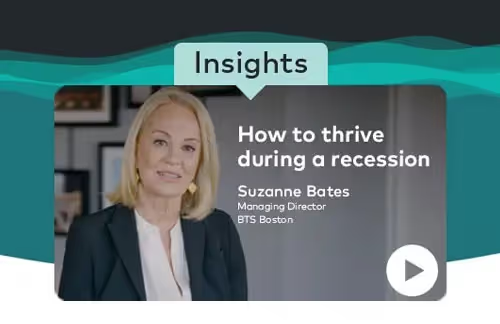
Q1 2023 Newsletter
Heading 1
Heading 2
Heading 3
Heading 4
Heading 5
Heading 6
Lorem ipsum dolor sit amet, consectetur adipiscing elit, sed do eiusmod tempor incididunt ut labore et dolore magna aliqua. Ut enim ad minim veniam, quis nostrud exercitation ullamco laboris nisi ut aliquip ex ea commodo consequat. Duis aute irure dolor in reprehenderit in voluptate velit esse cillum dolore eu fugiat nulla pariatur.
Block quote
Ordered list
- Item 1
- Item 2
- Item 3
Unordered list
- Item A
- Item B
- Item C
Bold text
Emphasis
Superscript
Subscript
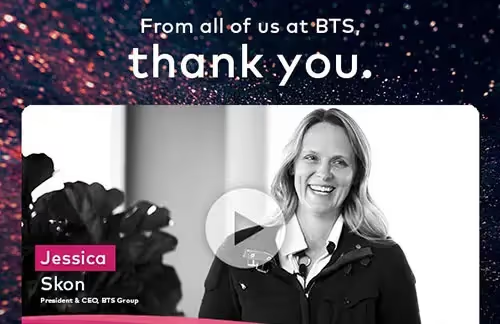
Q4 2022 Newsletter
Heading 1
Heading 2
Heading 3
Heading 4
Heading 5
Heading 6
Lorem ipsum dolor sit amet, consectetur adipiscing elit, sed do eiusmod tempor incididunt ut labore et dolore magna aliqua. Ut enim ad minim veniam, quis nostrud exercitation ullamco laboris nisi ut aliquip ex ea commodo consequat. Duis aute irure dolor in reprehenderit in voluptate velit esse cillum dolore eu fugiat nulla pariatur.
Block quote
Ordered list
- Item 1
- Item 2
- Item 3
Unordered list
- Item A
- Item B
- Item C
Bold text
Emphasis
Superscript
Subscript
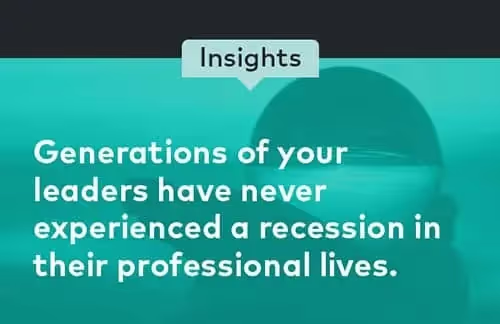
Q3 2022 Newsletter
Heading 1
Heading 2
Heading 3
Heading 4
Heading 5
Heading 6
Lorem ipsum dolor sit amet, consectetur adipiscing elit, sed do eiusmod tempor incididunt ut labore et dolore magna aliqua. Ut enim ad minim veniam, quis nostrud exercitation ullamco laboris nisi ut aliquip ex ea commodo consequat. Duis aute irure dolor in reprehenderit in voluptate velit esse cillum dolore eu fugiat nulla pariatur.
Block quote
Ordered list
- Item 1
- Item 2
- Item 3
Unordered list
- Item A
- Item B
- Item C
Bold text
Emphasis
Superscript
Subscript
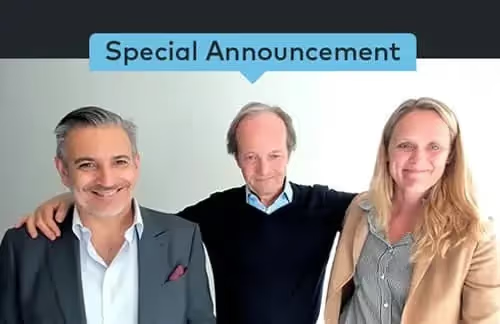
Q2 2022 Newsletter
Heading 1
Heading 2
Heading 3
Heading 4
Heading 5
Heading 6
Lorem ipsum dolor sit amet, consectetur adipiscing elit, sed do eiusmod tempor incididunt ut labore et dolore magna aliqua. Ut enim ad minim veniam, quis nostrud exercitation ullamco laboris nisi ut aliquip ex ea commodo consequat. Duis aute irure dolor in reprehenderit in voluptate velit esse cillum dolore eu fugiat nulla pariatur.
Block quote
Ordered list
- Item 1
- Item 2
- Item 3
Unordered list
- Item A
- Item B
- Item C
Bold text
Emphasis
Superscript
Subscript
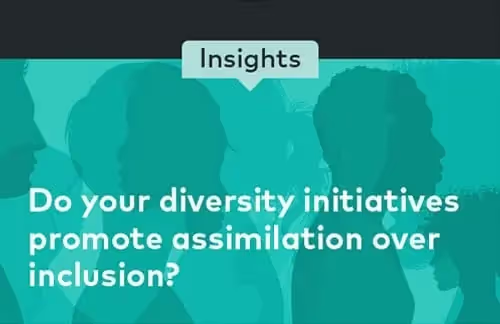
Q1 2022 Newsletter
Heading 1
Heading 2
Heading 3
Heading 4
Heading 5
Heading 6
Lorem ipsum dolor sit amet, consectetur adipiscing elit, sed do eiusmod tempor incididunt ut labore et dolore magna aliqua. Ut enim ad minim veniam, quis nostrud exercitation ullamco laboris nisi ut aliquip ex ea commodo consequat. Duis aute irure dolor in reprehenderit in voluptate velit esse cillum dolore eu fugiat nulla pariatur.
Block quote
Ordered list
- Item 1
- Item 2
- Item 3
Unordered list
- Item A
- Item B
- Item C
Bold text
Emphasis
Superscript
Subscript

Q4 2021 Newsletter
Heading 1
Heading 2
Heading 3
Heading 4
Heading 5
Heading 6
Lorem ipsum dolor sit amet, consectetur adipiscing elit, sed do eiusmod tempor incididunt ut labore et dolore magna aliqua. Ut enim ad minim veniam, quis nostrud exercitation ullamco laboris nisi ut aliquip ex ea commodo consequat. Duis aute irure dolor in reprehenderit in voluptate velit esse cillum dolore eu fugiat nulla pariatur.
Block quote
Ordered list
- Item 1
- Item 2
- Item 3
Unordered list
- Item A
- Item B
- Item C
Bold text
Emphasis
Superscript
Subscript

Safer workplaces, stronger bottom line: Unlocking the power of your frontline leaders
Heading 1
Heading 2
Heading 3
Heading 4
Heading 5
Heading 6
Lorem ipsum dolor sit amet, consectetur adipiscing elit, sed do eiusmod tempor incididunt ut labore et dolore magna aliqua. Ut enim ad minim veniam, quis nostrud exercitation ullamco laboris nisi ut aliquip ex ea commodo consequat. Duis aute irure dolor in reprehenderit in voluptate velit esse cillum dolore eu fugiat nulla pariatur.
Block quote
Ordered list
- Item 1
- Item 2
- Item 3
Unordered list
- Item A
- Item B
- Item C
Bold text
Emphasis
Superscript
Subscript

An emerging role of coach in learning journeys
Heading 1
Heading 2
Heading 3
Heading 4
Heading 5
Heading 6
Lorem ipsum dolor sit amet, consectetur adipiscing elit, sed do eiusmod tempor incididunt ut labore et dolore magna aliqua. Ut enim ad minim veniam, quis nostrud exercitation ullamco laboris nisi ut aliquip ex ea commodo consequat. Duis aute irure dolor in reprehenderit in voluptate velit esse cillum dolore eu fugiat nulla pariatur.
Block quote
Ordered list
- Item 1
- Item 2
- Item 3
Unordered list
- Item A
- Item B
- Item C
Bold text
Emphasis
Superscript
Subscript

Strategic Execution Observatory
Heading 1
Heading 2
Heading 3
Heading 4
Heading 5
Heading 6
Lorem ipsum dolor sit amet, consectetur adipiscing elit, sed do eiusmod tempor incididunt ut labore et dolore magna aliqua. Ut enim ad minim veniam, quis nostrud exercitation ullamco laboris nisi ut aliquip ex ea commodo consequat. Duis aute irure dolor in reprehenderit in voluptate velit esse cillum dolore eu fugiat nulla pariatur.
Block quote
Ordered list
- Item 1
- Item 2
- Item 3
Unordered list
- Item A
- Item B
- Item C
Bold text
Emphasis
Superscript
Subscript
.jpg)
Breaking bias with simulation-based talent strategies
Heading 1
Heading 2
Heading 3
Heading 4
Heading 5
Heading 6
Lorem ipsum dolor sit amet, consectetur adipiscing elit, sed do eiusmod tempor incididunt ut labore et dolore magna aliqua. Ut enim ad minim veniam, quis nostrud exercitation ullamco laboris nisi ut aliquip ex ea commodo consequat. Duis aute irure dolor in reprehenderit in voluptate velit esse cillum dolore eu fugiat nulla pariatur.
Block quote
Ordered list
- Item 1
- Item 2
- Item 3
Unordered list
- Item A
- Item B
- Item C
Bold text
Emphasis
Superscript
Subscript

The evolution of sales and marketing: A new phase in sales, marketing, and customer service is here
Heading 1
Heading 2
Heading 3
Heading 4
Heading 5
Heading 6
Lorem ipsum dolor sit amet, consectetur adipiscing elit, sed do eiusmod tempor incididunt ut labore et dolore magna aliqua. Ut enim ad minim veniam, quis nostrud exercitation ullamco laboris nisi ut aliquip ex ea commodo consequat. Duis aute irure dolor in reprehenderit in voluptate velit esse cillum dolore eu fugiat nulla pariatur.
Block quote
Ordered list
- Item 1
- Item 2
- Item 3
Unordered list
- Item A
- Item B
- Item C
Bold text
Emphasis
Superscript
Subscript

Why even the best intentioned leadership development efforts often fail
Heading 1
Heading 2
Heading 3
Heading 4
Heading 5
Heading 6
Lorem ipsum dolor sit amet, consectetur adipiscing elit, sed do eiusmod tempor incididunt ut labore et dolore magna aliqua. Ut enim ad minim veniam, quis nostrud exercitation ullamco laboris nisi ut aliquip ex ea commodo consequat. Duis aute irure dolor in reprehenderit in voluptate velit esse cillum dolore eu fugiat nulla pariatur.
Block quote
Ordered list
- Item 1
- Item 2
- Item 3
Unordered list
- Item A
- Item B
- Item C
Bold text
Emphasis
Superscript
Subscript

Mind the talent gap: strategies for growing and retaining high performing General Managers
Heading 1
Heading 2
Heading 3
Heading 4
Heading 5
Heading 6
Lorem ipsum dolor sit amet, consectetur adipiscing elit, sed do eiusmod tempor incididunt ut labore et dolore magna aliqua. Ut enim ad minim veniam, quis nostrud exercitation ullamco laboris nisi ut aliquip ex ea commodo consequat. Duis aute irure dolor in reprehenderit in voluptate velit esse cillum dolore eu fugiat nulla pariatur.
Block quote
Ordered list
- Item 1
- Item 2
- Item 3
Unordered list
- Item A
- Item B
- Item C
Bold text
Emphasis
Superscript
Subscript

Observatorio de Ejecución Estratégica
Heading 1
Heading 2
Heading 3
Heading 4
Heading 5
Heading 6
Lorem ipsum dolor sit amet, consectetur adipiscing elit, sed do eiusmod tempor incididunt ut labore et dolore magna aliqua. Ut enim ad minim veniam, quis nostrud exercitation ullamco laboris nisi ut aliquip ex ea commodo consequat. Duis aute irure dolor in reprehenderit in voluptate velit esse cillum dolore eu fugiat nulla pariatur.
Block quote
Ordered list
- Item 1
- Item 2
- Item 3
Unordered list
- Item A
- Item B
- Item C
Bold text
Emphasis
Superscript
Subscript

Organizaciones adaptativas: el plan de BTS para convertir la flexibilidad organizativa en una ventaja competitiva
Heading 1
Heading 2
Heading 3
Heading 4
Heading 5
Heading 6
Lorem ipsum dolor sit amet, consectetur adipiscing elit, sed do eiusmod tempor incididunt ut labore et dolore magna aliqua. Ut enim ad minim veniam, quis nostrud exercitation ullamco laboris nisi ut aliquip ex ea commodo consequat. Duis aute irure dolor in reprehenderit in voluptate velit esse cillum dolore eu fugiat nulla pariatur.
Block quote
Ordered list
- Item 1
- Item 2
- Item 3
Unordered list
- Item A
- Item B
- Item C
Bold text
Emphasis
Superscript
Subscript

